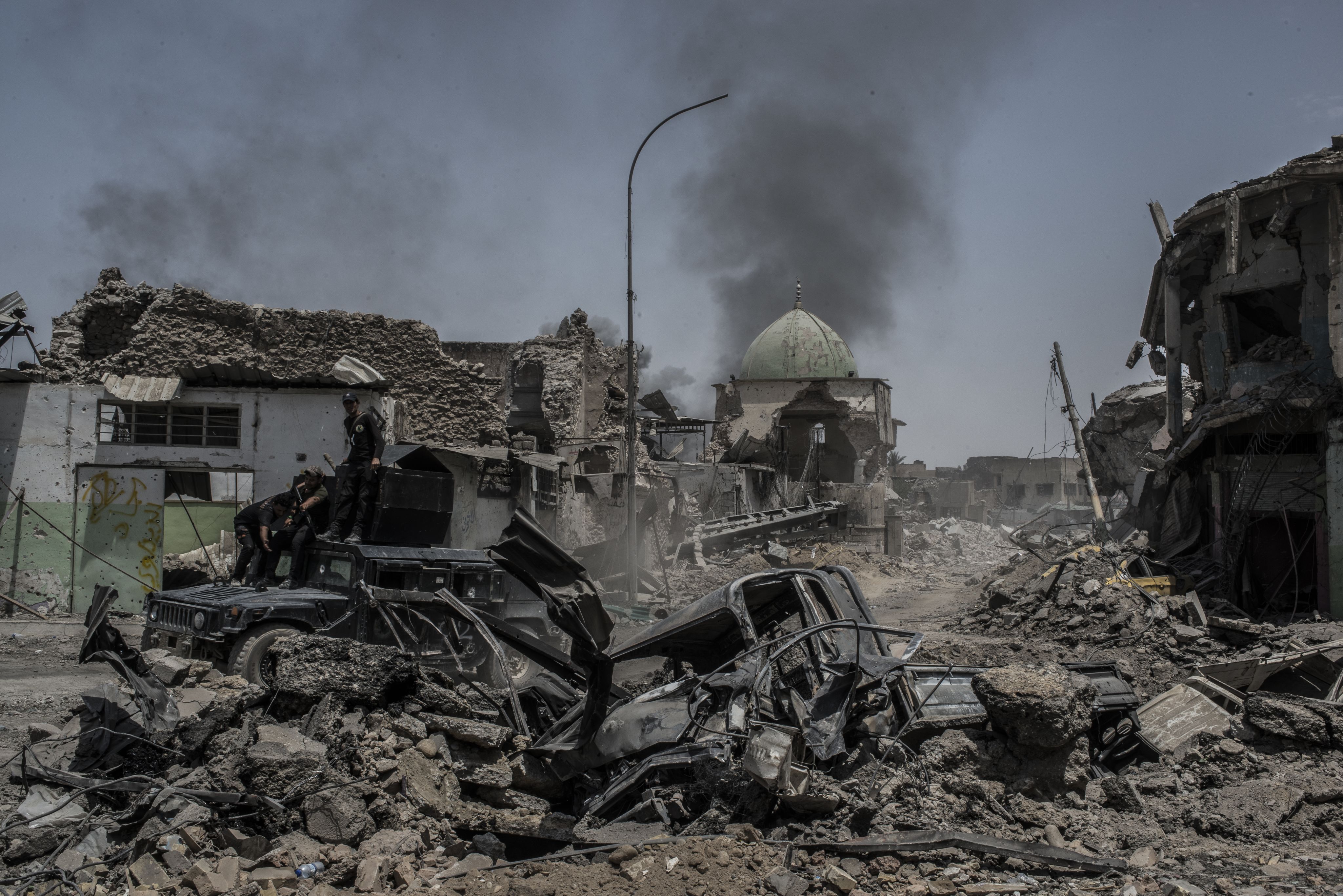The Iraq War
From US invasion to the defeat of ISIS

It has been 20 years since US-led coalition forces invaded Iraq and overthrew the government of Saddam Hussein on false claims that he had weapons of mass destruction.
The war continued for almost a decade, killing at least 210,000 Iraqi civilians. Millions more were displaced and cities destroyed.
The vacuum of power caused by the toppling of the government led to a brutal civil war and the subsequent rise of ISIS.
Today, Iraq is plagued with rampant corruption, while unemployment remains staggeringly high, amid widespread public distrust in the government’s ability to deliver adequate services and security. Crackdowns on protesters and activists are frequent and often bloody.
The current cabinet of Prime Minister Mohammed Shia Al Sudani has pledged, like many others since the war, to tackle these challenges.
Here is a look at how the Iraq War began, and the destruction that followed.
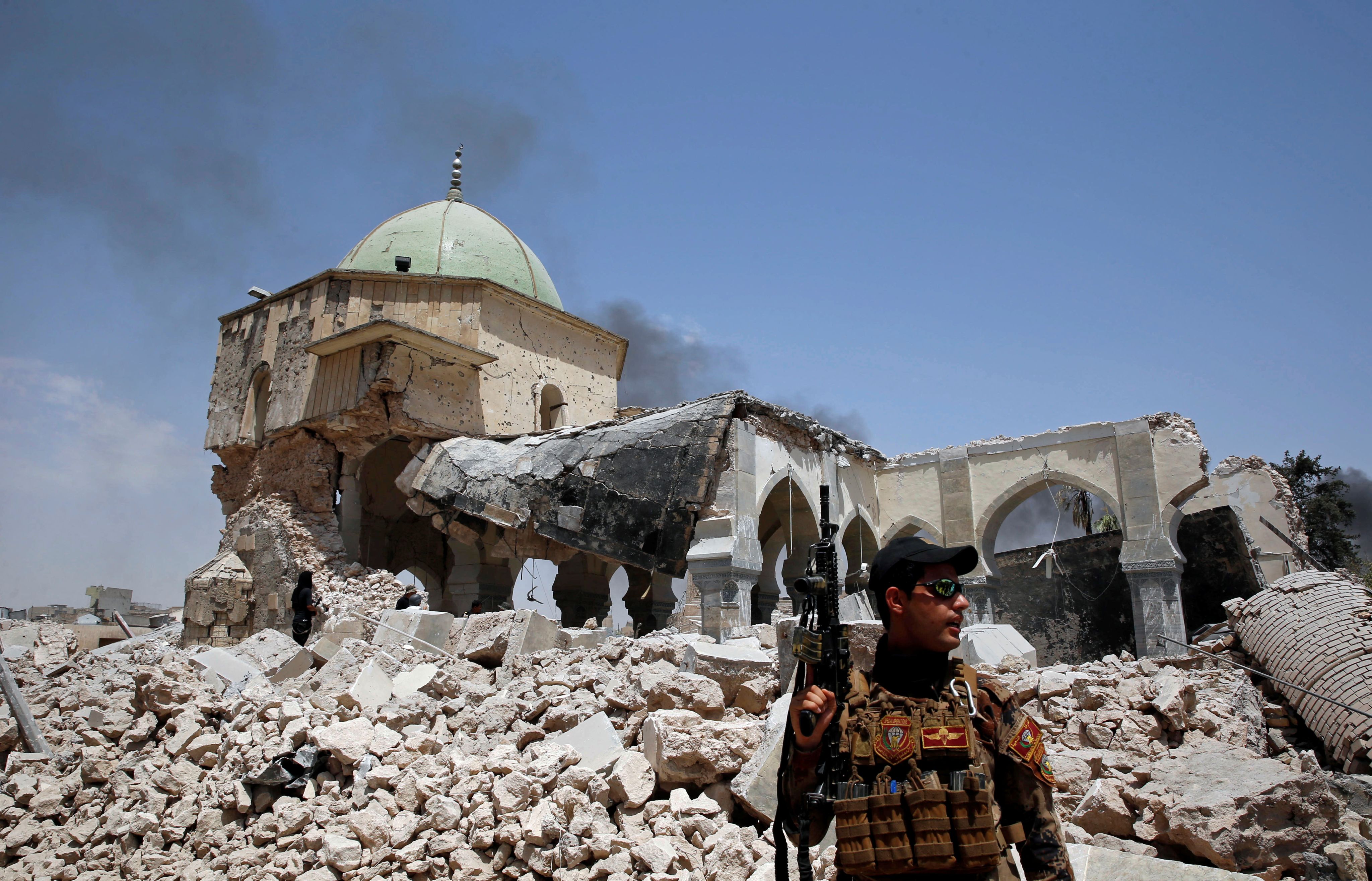

January 29: US President George Bush identifies Iraq, Iran and North Korea as part of an “axis of evil” in his State of the Union address. “States like these, and their terrorist allies, constitute an axis of evil, arming to threaten the peace of the world. By seeking weapons of mass destruction, these regimes pose a grave and growing danger,” he says.
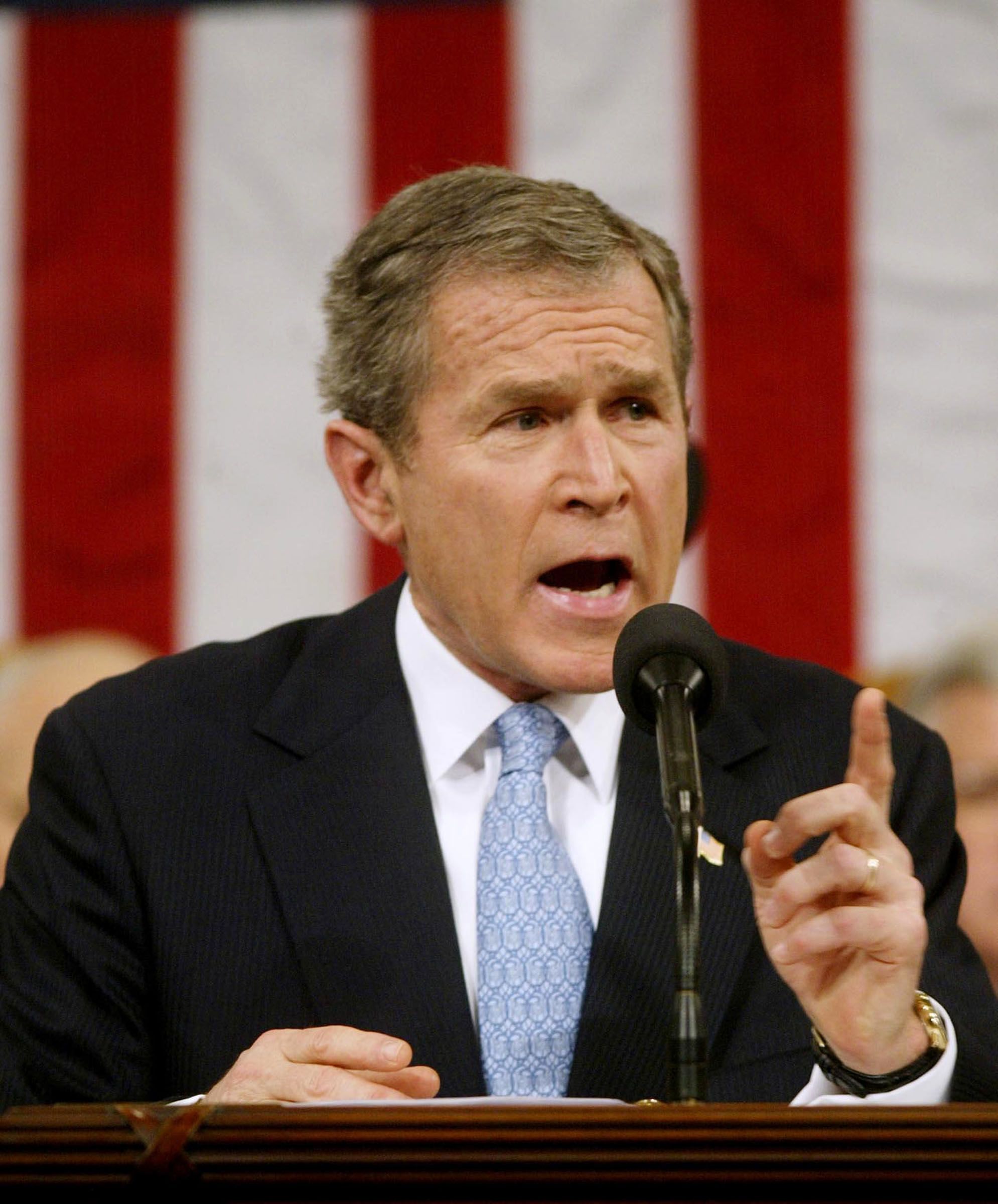
President George W Bush delivers his State of the Union address to a joint session of the US Congress. Getty
President George W Bush delivers his State of the Union address to a joint session of the US Congress. Getty
September 12: Mr Bush addresses the United Nations General Assembly and warns that military action is unavoidable if Iraq does not comply with UN resolutions on disarmament, which were put in place as part of a ceasefire agreement at the end of the 1991 Gulf War.
September 24: A dossier on threats posed by Iraq is published by the UK claiming that its President Saddam Hussein has weapons of mass destruction that can be used within 45 minutes.
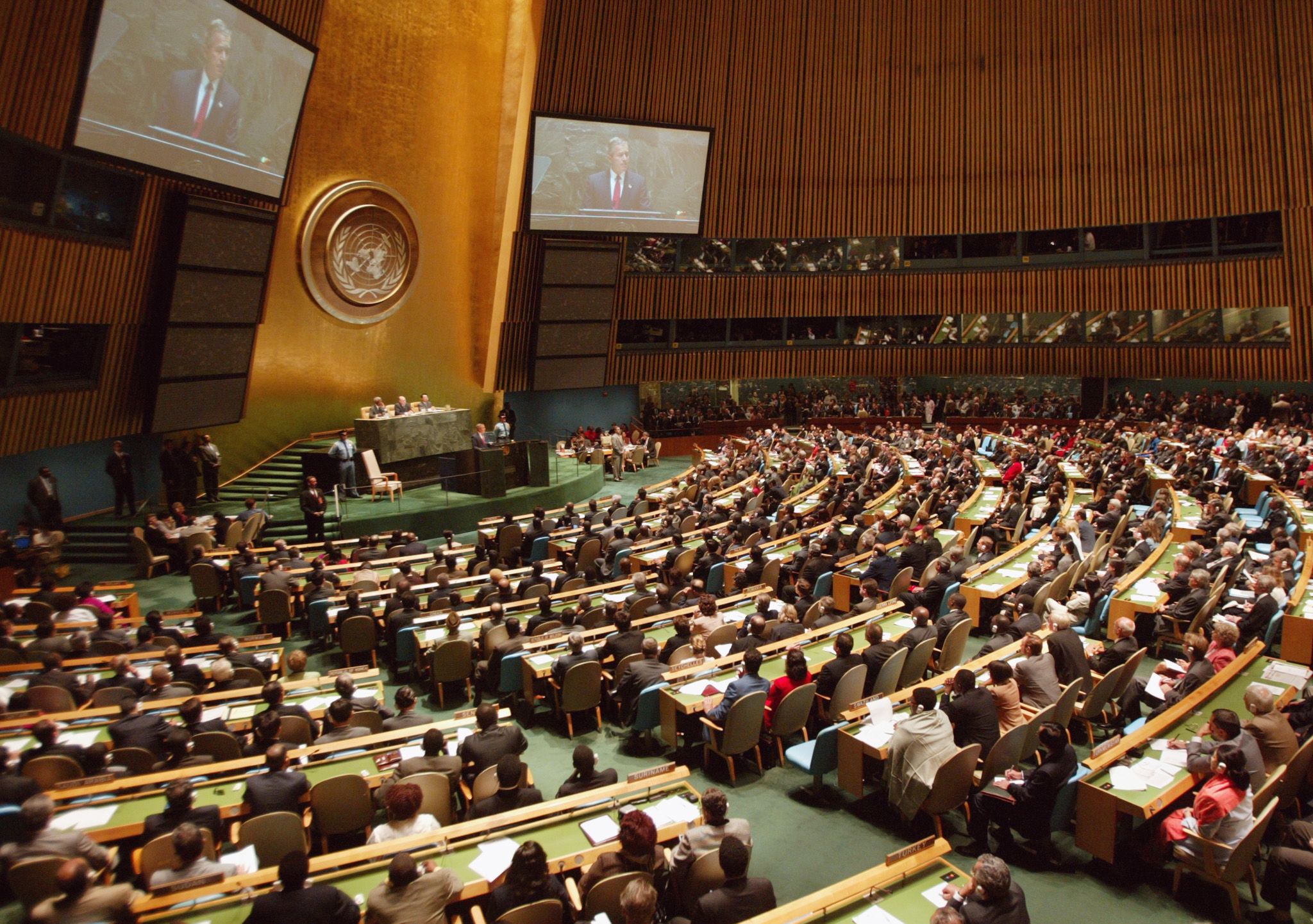
US President George W Bush makes his case against Iraq at the UN General Assembly on September 12, 2002 in New York. Reuters
US President George W Bush makes his case against Iraq at the UN General Assembly on September 12, 2002 in New York. Reuters
November 8: The UN Security Council unanimously passes resolution 1441, giving Iraq "a final opportunity to comply with its disarmament obligations" and warning of "serious consequences" if it does not. There is no specified “consequence” in resolution 1441, however.
November 2002 to March 2003: The UN's Monitoring, Verification and Inspection Commission fails to find weapons of mass destruction despite carrying out 700 inspections in Iraq.

February 6: US Secretary of State Colin Powell calls for international backing for military action against Iraq. He presents satellite photographs and intercepted communications of Iraqi army units to the UN Security Council to try to illustrate Iraq’s deception over weapons of mass destruction.

US Secretary of State Colin Powell unveils evidence to the UN Security Council that Iraq is harbouring weapons of mass destruction, on February 5, 2003. AFP
US Secretary of State Colin Powell unveils evidence to the UN Security Council that Iraq is harbouring weapons of mass destruction, on February 5, 2003. AFP
February 25: The US and the UK submit a draft resolution to the UN, stating Iraq missed its "final opportunity" to disarm peacefully. This is opposed by France, Russia and Germany.
March 10: France and Russia announce they are ready to veto a UN Security Council resolution that gives Iraq seven days to disarm. France and Russia back the veto.
March 17: The UK, US and Spain abandon their attempt to secure a second UN resolution authorising force. Mr Bush gives Saddam and his sons 48 hours to leave Iraq or face war.
March 18: UK Prime Minister Tony Blair wins House of Commons backing to send UK forces into war in Iraq, despite a major rebellion by Labour Members of Parliament.

British Prime Minister Tony Blair leaves No 10 Downing Street on March 24, 2003, after addressing the House of Commons for the first time since coalition forces attacked Iraq. Getty
British Prime Minister Tony Blair leaves No 10 Downing Street on March 24, 2003, after addressing the House of Commons for the first time since coalition forces attacked Iraq. Getty
March 20: Mr Bush announces US forces have begun a military operation in Iraq.
“These are the opening stages of what will be a broad and concerted campaign,” he says in an address. The attack begins with a massive air strike campaign named “shock and awe”.
Bombs hit a farming community outside Baghdad, where intelligence incorrectly suggested Saddam Hussein might be hiding.

Smoke rises from explosions during the first few minutes of a massive air attack in Baghdad, on March 21, 2003. Getty
Smoke rises from explosions during the first few minutes of a massive air attack in Baghdad, on March 21, 2003. Getty
April 9: Iraq’s capital, Baghdad, falls to US forces. Saddam’s regime loses control as American troops enter the city centre.
April 28: US forces shoot dead 17 protesters in Fallujah.
May 1: Mr Bush delivers his “Mission Accomplished” speech aboard the USS Lincoln, prematurely declaring the end of major combat in Iraq.
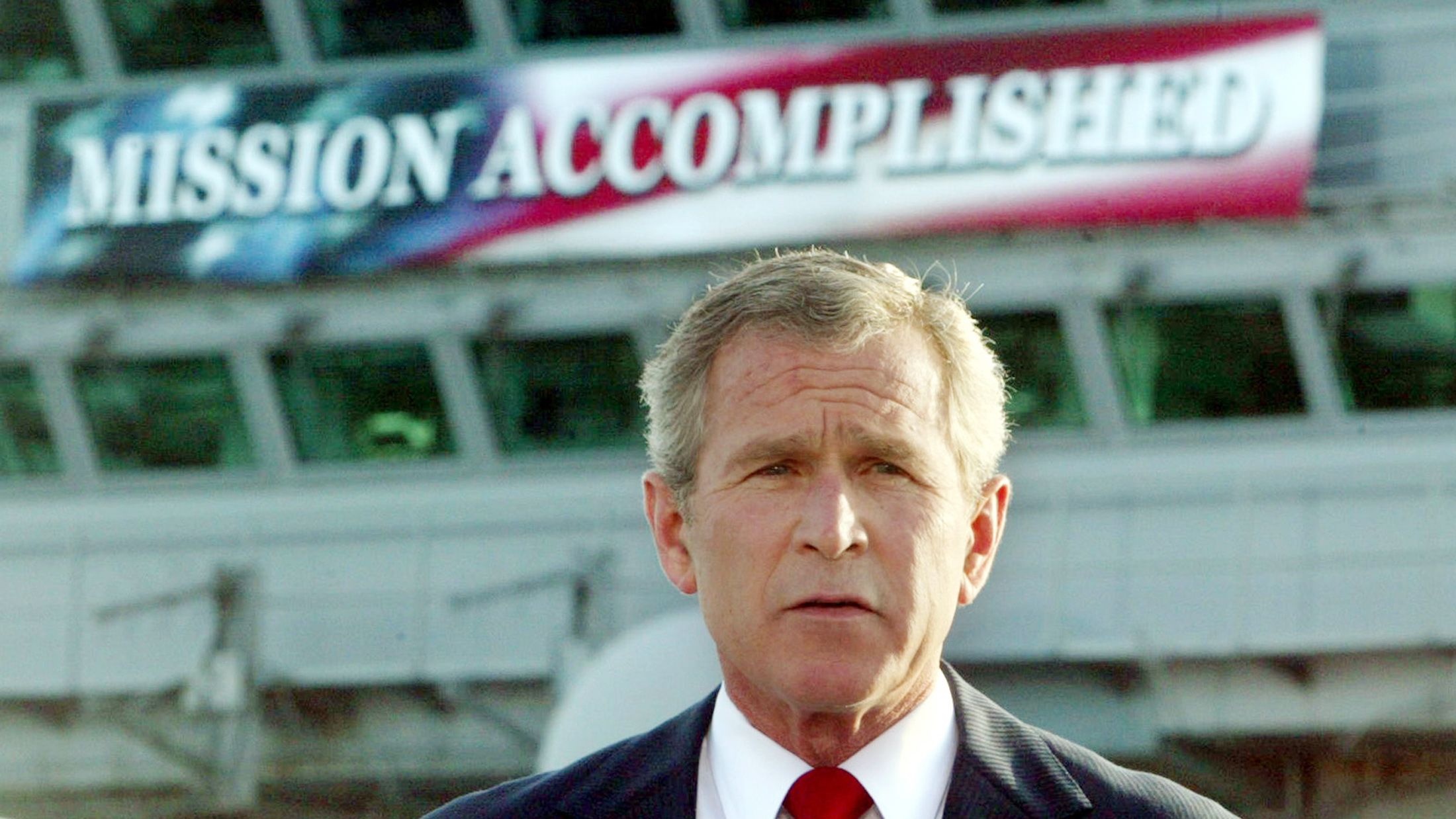
US President George W Bush declares the war in Iraq to be over, aboard the USS Abraham Lincoln on May 1, 2003. Reuters
US President George W Bush declares the war in Iraq to be over, aboard the USS Abraham Lincoln on May 1, 2003. Reuters
May 12: US ambassador Paul Bremer is appointed to lead the Coalition Provisional Authority (CPA), the US-led ruling authority during a transitional period, where power is handed to an interim Iraqi governing council — comprising a mix of Kurds, Sunnis and Shiites and mainly composed of former exiles.
May 16: Mr Bremer outlaws the former ruling Baath Party and orders Iraq institutions to “de-Baathify”, by removing the top three ranks of party members from public sector jobs and ministerial posts. Iraqis soon complain that this category is rapidly expanded without warning, gutting the public sector of qualified staff.
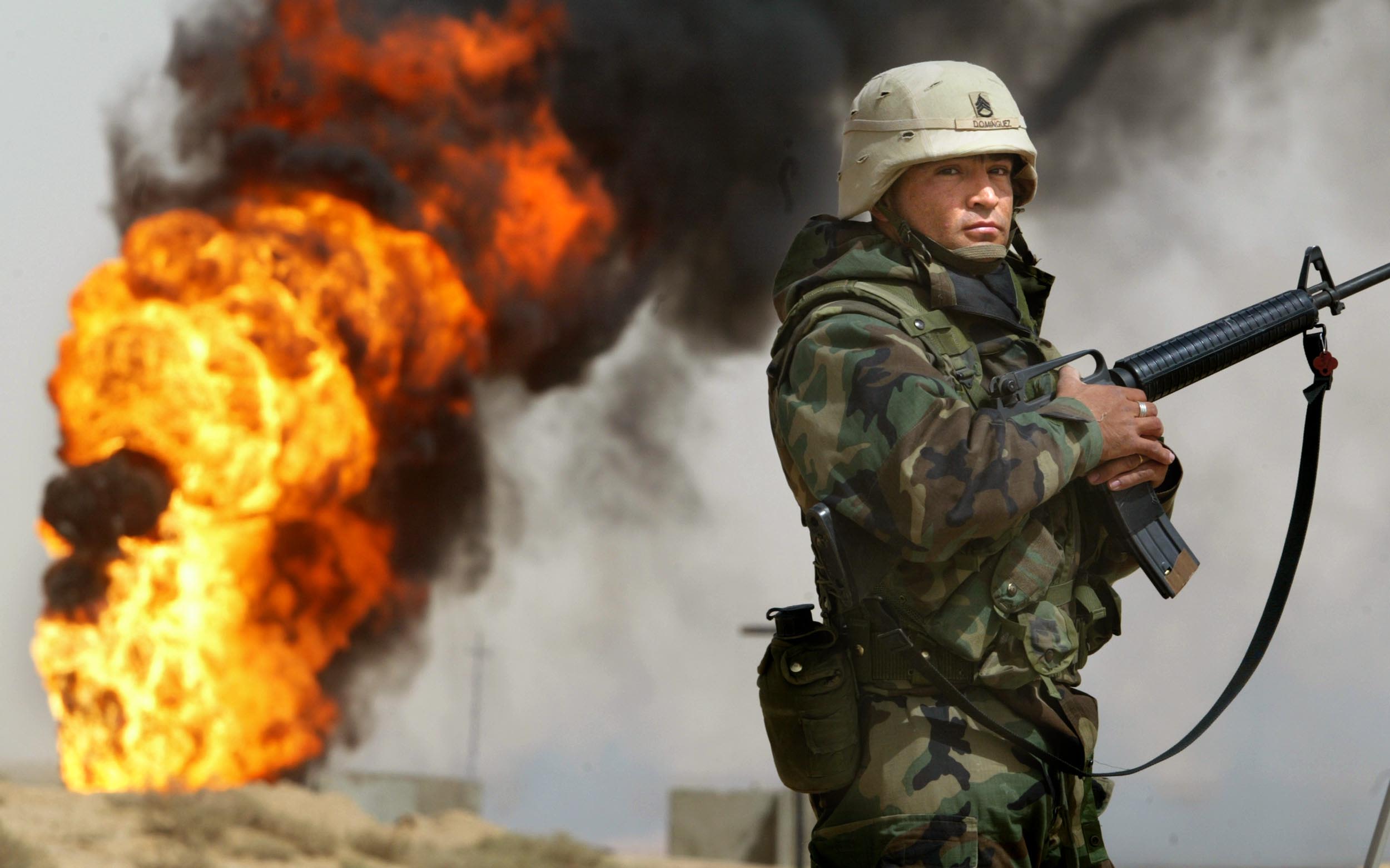
A US soldier stands guard next to a burning oil well at the Rumayla oil fields in Iraq on March 27, 2003. Getty
A US soldier stands guard next to a burning oil well at the Rumayla oil fields in Iraq on March 27, 2003. Getty
May 23: Mr Bremer dissolves the Iraqi military, leaving more than 350,000 soldiers without jobs. Former soldiers with the rank of colonel or above are banned from working for the new Iraqi government and do not receive severance or retirement. “We could have done a much better job of sorting through that and keeping the Iraqi army together,” Gen Ray Odierno, the US Army Chief of Staff, told TIME in 2015. “We struggled for years to try to put it back together again.”
Some of the disaffected Sunni men later joined militant groups, including Al Qaeda in Iraq, which is already co-operating with some Baath Party insurgents. Mr Bremer served as head of a caretaker government until the June 2004 handover to a provisional Iraqi government.
August 19: The UN headquarters in Baghdad comes under attack as 23 people are killed, including UN envoy Sergio Vieira de Mello, triggering the withdrawal of hundreds of UN workers from Iraq. Jordanian-born Abu Musab Al Zarqawi, the founder of Al Qaeda in Iraq, later known as the Islamic State of Iraq, claims responsibility.
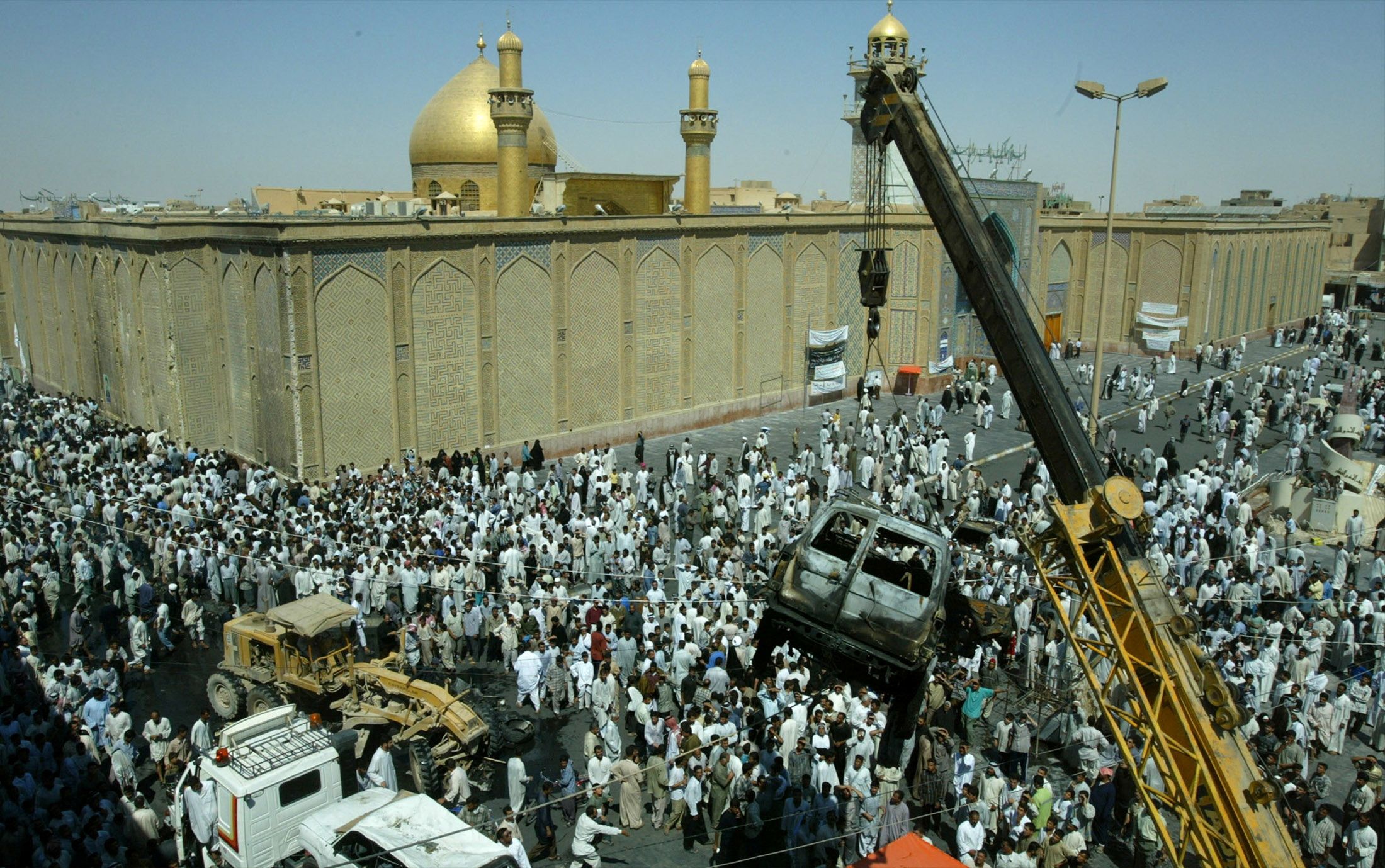
A burnt-out car is removed from outside a Shiite mosque in Najaf, Iraq, on August 30, 2003, a day after 87 people were killed in a car bomb attack. Reuters
A burnt-out car is removed from outside a Shiite mosque in Najaf, Iraq, on August 30, 2003, a day after 87 people were killed in a car bomb attack. Reuters
August 29: A car bomb kills 95 people at Najaf’s Imam Ali Mosque, the holiest Shiite shrine in Iraq. Among the dead was Ayatollah Muhammad Bakr Al Hakim, an important religious leader who had co-operated with the coalition. The attack raises sectarian tensions as thousands of Iraqi Shiites, some of them backed by Iran, demand the right to form militias. The Iran-backed Badr Organisation stages a large rally in Najaf, southern Iraq, the following month.
December 13: Saddam is found by US troops in a cellar south of Tikrit, near his hometown. "Ladies and gentlemen, we got him," says Mr Bremer. Reports of sectarian killings in and around Baghdad rise, with one police officer telling The Washington Post that the Badr Organisation has hit lists of Baathists, with hundreds of names on each list.
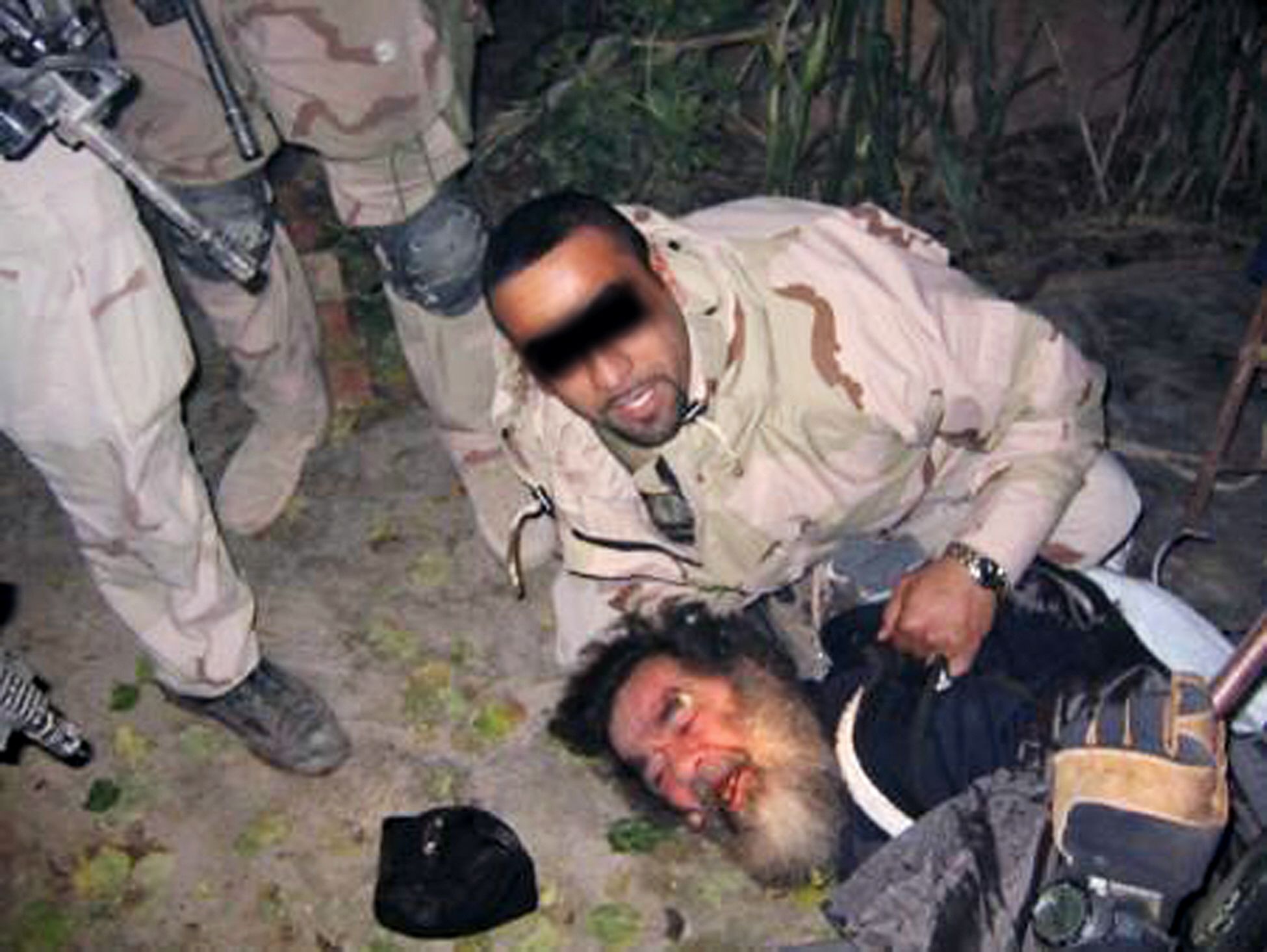
Ousted Iraqi leader Saddam Hussein is dragged out of hiding from an underground hole near his hometown of Awja on December 30, 2006. AFP
Ousted Iraqi leader Saddam Hussein is dragged out of hiding from an underground hole near his hometown of Awja on December 30, 2006. AFP

January 23: US forces intercept communications from Zarqawi in which he speaks of his intention to stir sectarian violence in Iraq, “to drag the [Islamic] nation into the battle”.
March 31: In Fallujah, four Blackwater private security contractors are killed and their mutilated, burnt bodies are left hanging from a bridge.
April 4: US forces enter Fallujah to apprehend the killers of the four contractors. Twenty-seven US soldiers, around 200 insurgents — many of them linked to Al Qaeda — and about 600 civilians are killed in three weeks of fighting. Fighting also flares up in Mosul, while followers of Shiite cleric Moqtada Sadr rise up across cities in the south. US and British forces fight Mr Al Sadr’s militias in Najaf, Karbala, Al Amara and Basra.
April 28: The US faces international condemnation after shocking photographs are published by CBS showing abuse of detainees at Abu Ghraib jail.
May 11: Al Qaeda beheads US businessman Nicholas Berg and records his killing. Analysts believe Zarqawi personally carried out the beheading.
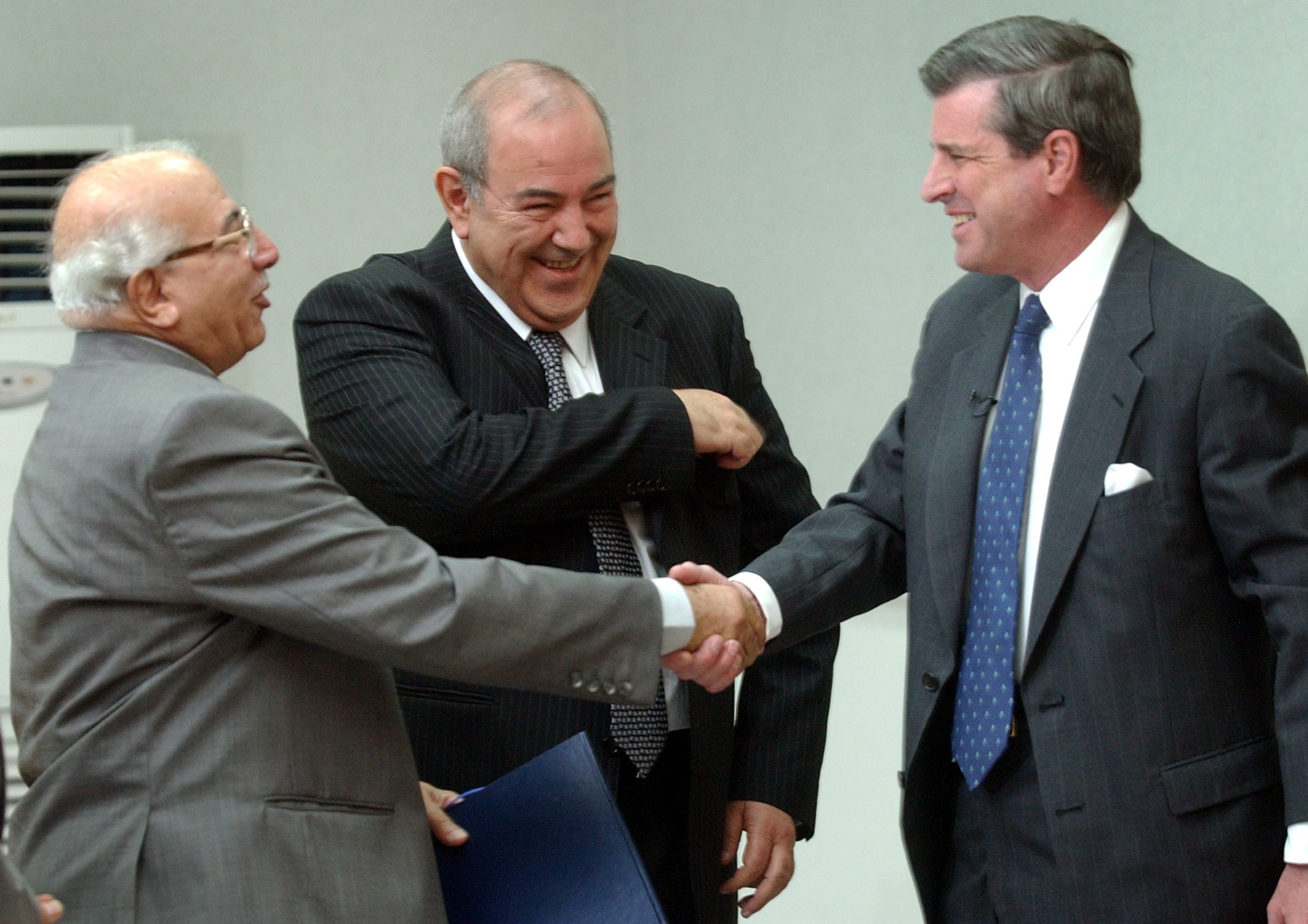
US administrator in Iraq Paul Bremer (R), Iraqi Prime Minister Ayad Allawi (C) and the country's most senior judge Midhat Mahmoud (L) smile as the US transfers sovereignty to Iraq on June 28, 2004, in Baghdad. Reuters
US administrator in Iraq Paul Bremer (R), Iraqi Prime Minister Ayad Allawi (C) and the country's most senior judge Midhat Mahmoud (L) smile as the US transfers sovereignty to Iraq on June 28, 2004, in Baghdad. Reuters
June 27: The US heralds a “Transfer of Sovereignty” to the Iraqi government. Prime Minister Ayad Allawi calls the event “a historic day,” adding that Iraq was “capable of controlling the security situation”. Mr Bremer leaves Iraq within a day of the handover.
October 6: The Iraq Survey Group, a international team of 1,400 WMD experts organised by the Pentagon to find hidden weapons in Iraq, concludes its mission. The Duelfer Report, named after former CIA agent Charles Duelfer, who led the team, concludes Iraq no longer had an active WMD programme at the time of the invasion.
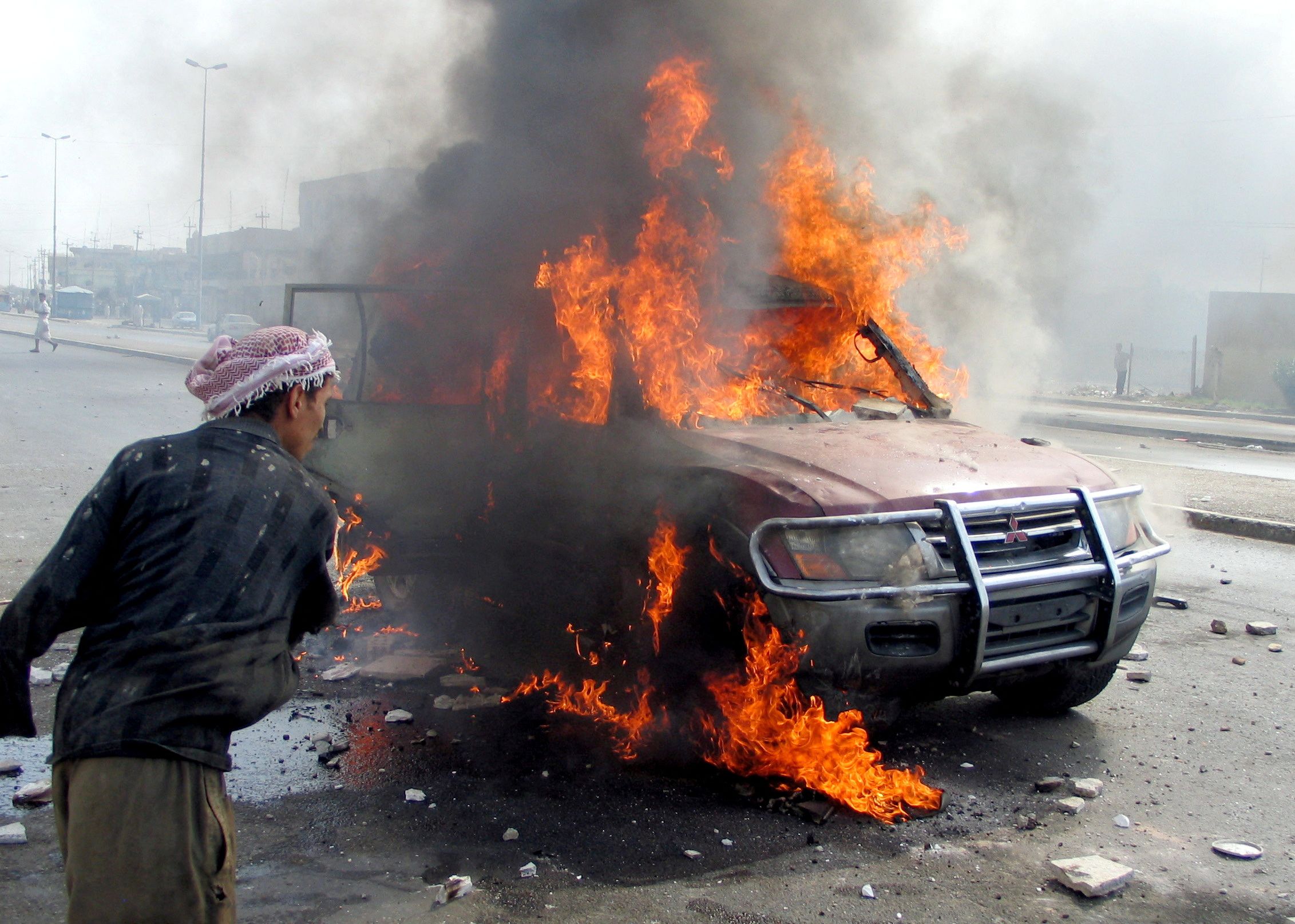
A car burn in the aftermath of an insurgent attack on Fallujah on March 31, 2004. Reuters
A car burn in the aftermath of an insurgent attack on Fallujah on March 31, 2004. Reuters
November 8: US forces launch a second attack on Fallujah. The more violent offensive lasts around six weeks and leads to 800 civilian deaths, according to the Red Cross. The battle ends after at least 1,000 Al Qaeda militants and 95 US soldiers are killed.
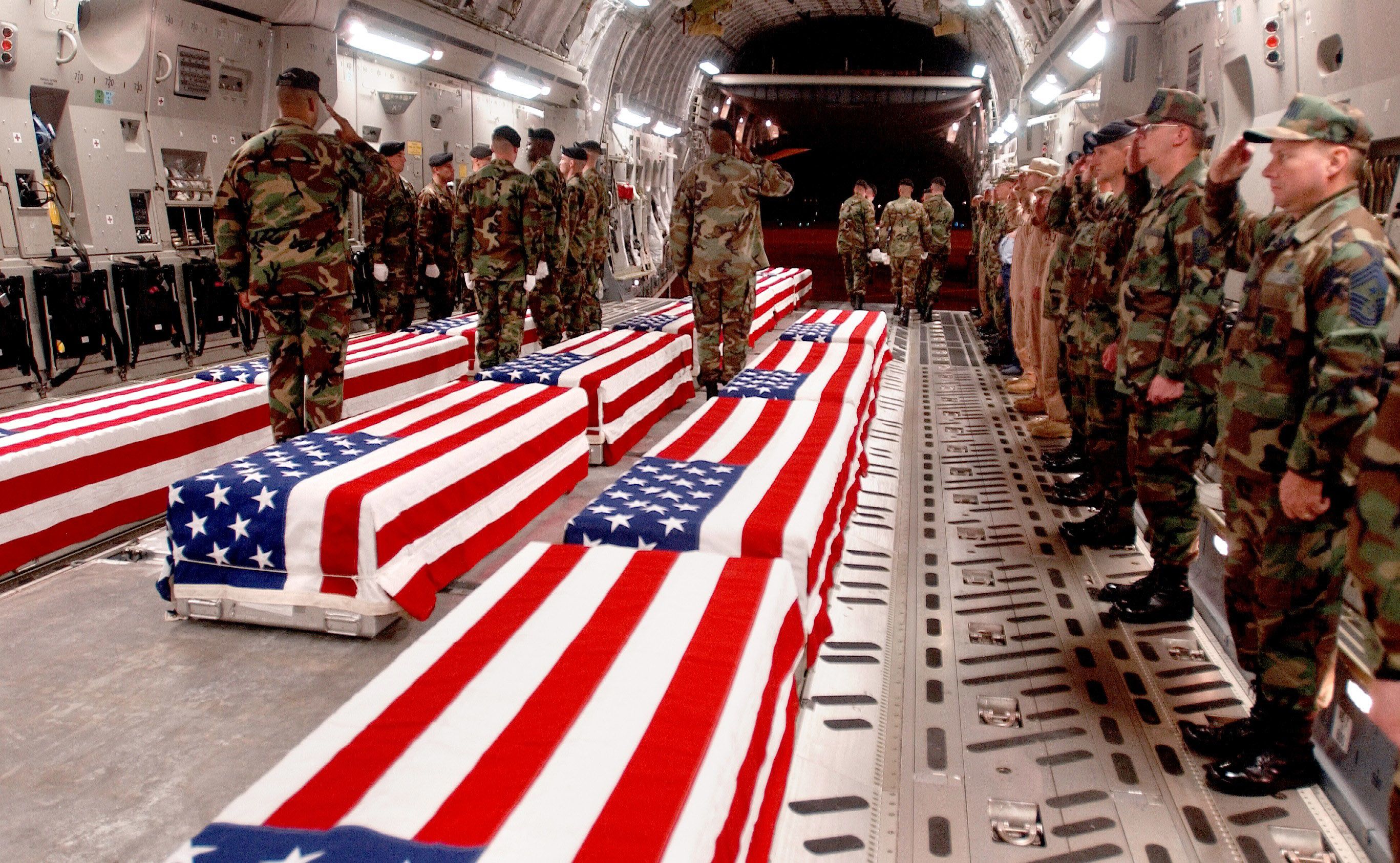
Coffins of US military personnel killed in Iraq are prepared to be offloaded at Dover Air Force Base in Delaware. Reuters
Coffins of US military personnel killed in Iraq are prepared to be offloaded at Dover Air Force Base in Delaware. Reuters
November 16: A well-known Irish health worker with years of experience in Iraq is confirmed to have been executed by unknown kidnappers. Margaret Hassan worked in Iraq during the 1990s and was opposed to the war and occupation.

January 4: The governor of Baghdad is assassinated.
January 26: 36 US soldiers die when a helicopter is shot down by insurgents amid a wider wave of violence sweeping the country. Suicide attacks and car bombings, as well as assassinations of high-profile Iraqis, and anyone suspected of supporting the occupation, are now a regular occurrence.
January 30: Iraqis vote in the first parliamentary elections of the post-Saddam era. Sunnis largely boycott the vote, while most Shiite parties coalesce into a sectarian bloc, cementing divisions within the country.

Voters in Baghdad take part in the country's first multiparty elections in 50 years on January 30, 2005. Getty
Voters in Baghdad take part in the country's first multiparty elections in 50 years on January 30, 2005. Getty
February 15: At least 115 men are killed in a suicide attack while queuing to take a medical test for joining the police in Hillah, south of Baghdad.
April 6: Patriotic Union of Kurdistan leader Jalal Talabani is sworn in as the first democratically elected President of Iraq.
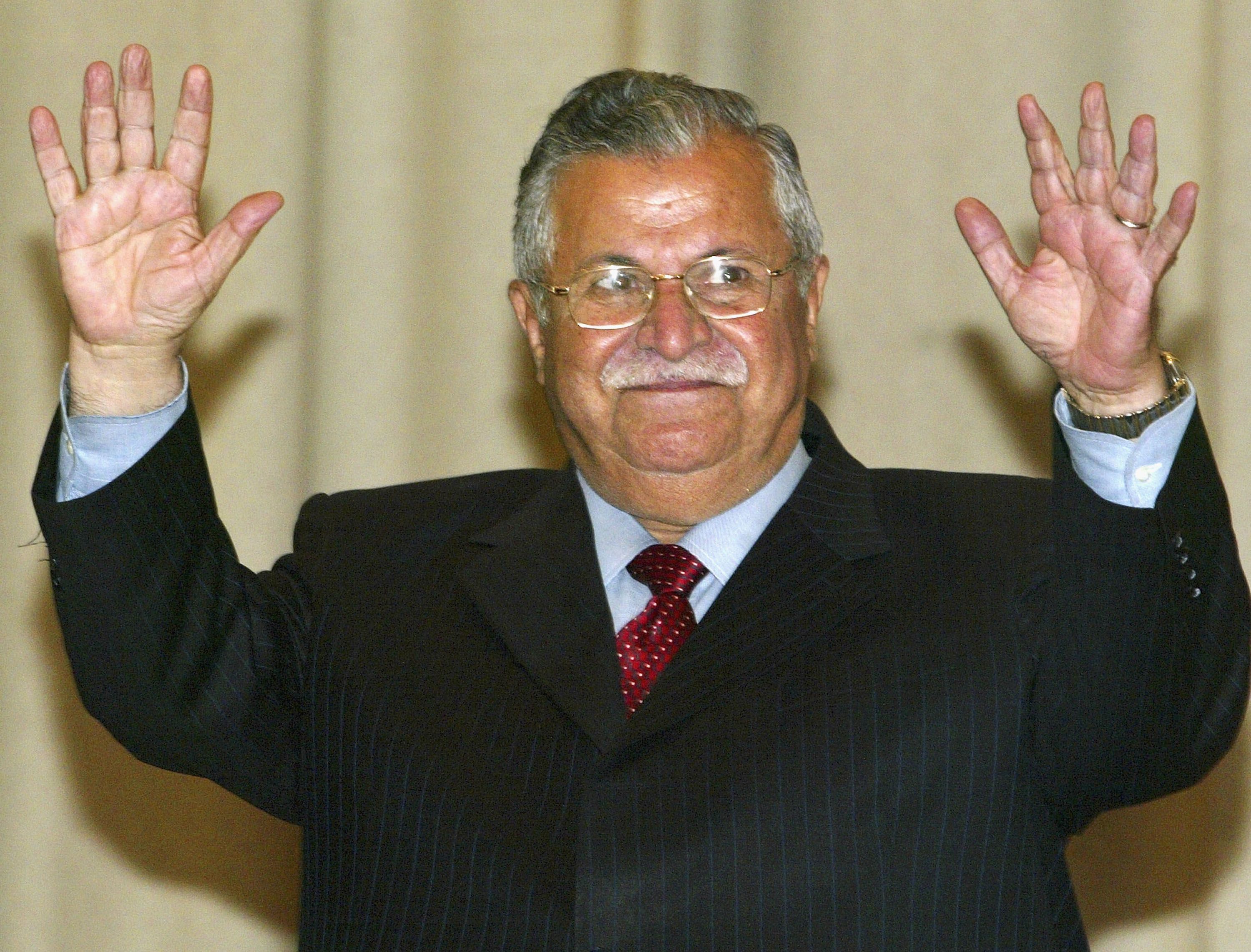
Veteran Kurdish leader Jalal Talabani raises his hands after being sworn in as Iraq's President on April 7, 2005. Getty
Veteran Kurdish leader Jalal Talabani raises his hands after being sworn in as Iraq's President on April 7, 2005. Getty

Ibrahim Al Jaafari, the Prime Minister Designate, speaks to the media following a parliamentary session in Baghdad on April 27, 2005. EPA
Ibrahim Al Jaafari, the Prime Minister Designate, speaks to the media following a parliamentary session in Baghdad on April 27, 2005. EPA
April 29: Shiite Islamist Ibrahim Al Jaafari takes office as Prime Minister, hailing from the exiled Dawa Party. At least 17 car bombs are detonated across Iraq in a co-ordinated attack, killing at least 50 — a sign of the severity of violence that was to come as Iraq slid towards civil war.
June 17: Insurgent violence mounts. As hundreds of civilians and Iraqi security forces die each month in suicide attacks and reprisal killings, US and Iraqi forces launch a large-scale operation, known as Iron Curtain, near the Syrian border to stop infiltrating terrorists.

Burnt-out vehicles at the scene of a bombing that killed 22 people in south-east Baghdad on July 24, 2005. AFP
Burnt-out vehicles at the scene of a bombing that killed 22 people in south-east Baghdad on July 24, 2005. AFP
July 17: Another wave of suicide attacks hits Iraq, killing at least 150 people.
August 31: At least 950 Shiite pilgrims are crushed or drowned in a stampede over Al Aimmah bridge in central Baghdad, as they march towards the holy Al Kadhimiya shrine in the centre of the city. The stampede was reportedly sparked by fears that a suicide bomber was in the procession.
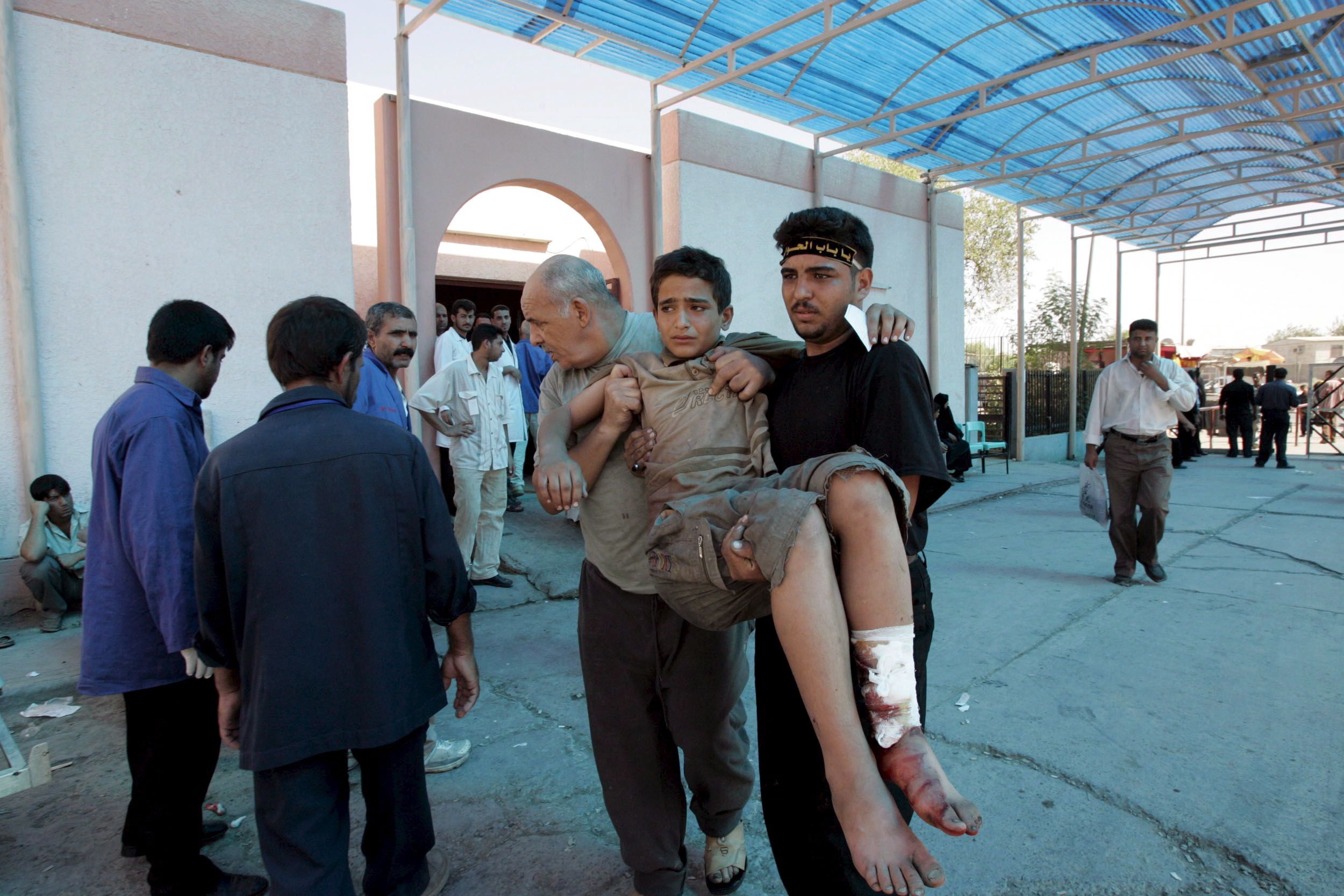
An injured child is carried to a Baghdad hospital after a stampede at the Al Kadhimiya holy shrine killed hundreds of Shiite pilgrims on August 31, 2005. EPA
An injured child is carried to a Baghdad hospital after a stampede at the Al Kadhimiya holy shrine killed hundreds of Shiite pilgrims on August 31, 2005. EPA
September 20: Iraqi authorities say the country’s interim defence minister may have stolen around $2.3 billion by rigging defence contracts, a sign of increased political corruption in the country.
September: Iraq and the UK suffer a diplomatic rift after British forces clash with police in the southern port city of Basra. Two British Special Forces soldiers had been detained and were subsequently rescued from a police station after a warning that they faced execution. Much of Iraq’s police force, particularly in the south of the country, has been infiltrated by large numbers of Iran-backed militia members opposed to the British presence.
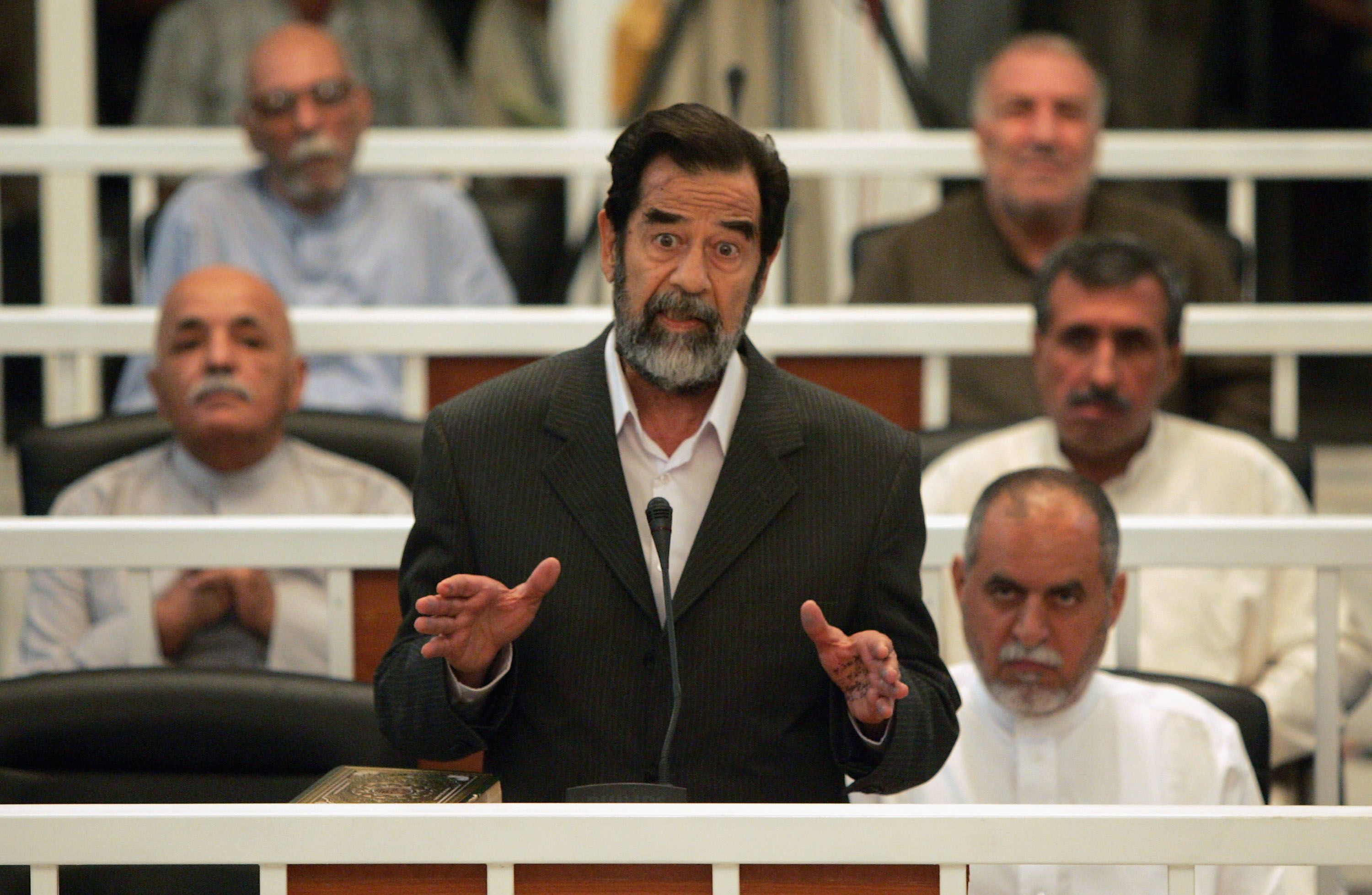
Saddam Hussein speaks defiantly as his trial begins in Baghdad's heavily fortified Green Zone on October 19, 2005. Getty
Saddam Hussein speaks defiantly as his trial begins in Baghdad's heavily fortified Green Zone on October 19, 2005. Getty
October 19: Saddam’s trial begins. Prosecutors focus on a massacre in the village of Dujail, 100 kilometres north of Baghdad, where about 150 people, including children, were killed following an assassination attempt against the former dictator. Many other charges relate to a genocidal campaign against Kurds during the 1980s, during which Saddam ordered a chemical attack on the town of Hallabjah, killing up to 5,000 people.
October 25: A referendum on Iraq’s constitution sees the document ratified by the majority of Iraqi voters, although many Sunnis boycott the poll or are unable to vote due to security risks. The document says Islam will be a source of law in a democratic Iraq, outlines how oil revenue and oil contracts will be managed across the country, and enshrines basic freedom. It calls for a series of parliamentary committees and special laws to clarify energy policies and citizens’ rights, but little action is taken, leaving Iraq open to seemingly endless political disputes.
December 15: Parliamentary elections are held amid unprecedented security with a reported turnout of more than 70 per cent. A large bloc, the United Iraqi Alliance, wins 128 seats in the 275-member assembly, based on uniting Shiite political parties. The main Kurdish and Sunni parties also unite in separate blocs, but Sunni politicians strongly contest the outcome.

January 1-7: Nearly 200 people are killed in a week of suicide bombings and reprisals. Iraq’s security situation increasingly resembles full-scale civil war.
February 22: The holy Shiite shrine of Al Askariya is destroyed by Al Qaeda. Shiite police and militia members — in many cases indistinguishable — rampage through Sunni-majority areas, an onslaught that coalition forces appear powerless to halt.

Iraqis clean up debris after a bombing at Al Askariya holy Shiite shrine on February 23, 2006, in Samarra, Iraq. Getty
Iraqis clean up debris after a bombing at Al Askariya holy Shiite shrine on February 23, 2006, in Samarra, Iraq. Getty
April 7: Suicide attacks hit the Shiite Buratha mosque in Baghdad, killing at least 75. Bodies, often bearing signs of torture, are found dumped on the streets on a daily basis, mostly suspected Sunni victims of Shiite paramilitary groups.
April 10: Kurdish and Sunni political parties threaten to withdraw support for Prime Minister Al Jafaari, potentially jeopardising his hold on power.
May 1: Kurdish President Jalal Talibani says at least 1,000 people were killed in April. Civilian deaths will pass 3,000 a month by the end of 2006.

Saddam Hussein reacts in court during the Anfal genocide trial in Baghdad, on December 21, 2006. EPA
Saddam Hussein reacts in court during the Anfal genocide trial in Baghdad, on December 21, 2006. EPA
May 15: Saddam is charged with crimes against humanity, along with his half-brother Barzan Ibrahim Al Tikriti, who headed Iraq’s Mukhabarat, or secret police. The final indictment focuses on the Dujail massacre. Saddam does not enter a plea, but makes a short speech rejecting the trial.
May 20: Nouri Al Maliki, a long-time senior member of the Dawa Party who lived in exile in Iran and Syria, is sworn in as Prime Minister. He is widely seen as a moderate, compromise candidate, who is not close to Iran. The latter US assessment proves incorrect, however, and Mr Al Maliki soon forms close partnerships with Iran-backed figures.

The scene of an air strike against terrorist leader Abu Musab Al Zarqawi in an isolated palm grove on the outskirts of Hibhib, Iraq on June 10, 2006. EPA
The scene of an air strike against terrorist leader Abu Musab Al Zarqawi in an isolated palm grove on the outskirts of Hibhib, Iraq on June 10, 2006. EPA
June 7: A US air strike kills Abu Musab Al Zarqawi, head of Al Qaeda in Iraq and by many later accounts the ideological father of ISIS. Hopes that violence levels will drop after the insurgency leader dies soon fade as instead they continue to soar.
July 19: The UN says deaths in Iraq have reached about 100 per day. In August, Iraq’s Health Ministry and the Baghdad morgue say deaths reached 3,438 for the month.
September: A memo by the head of intelligence for US forces in western Iraq is leaked to The Washington Post, saying US forces have all but lost control of the Sunni-majority province of Anbar. The coalition position in Iraq looks increasingly precarious amid mounting casualties among its forces and their Iraqi allies, raising sectarian violence and growing political opposition in Iraq and on the home front.
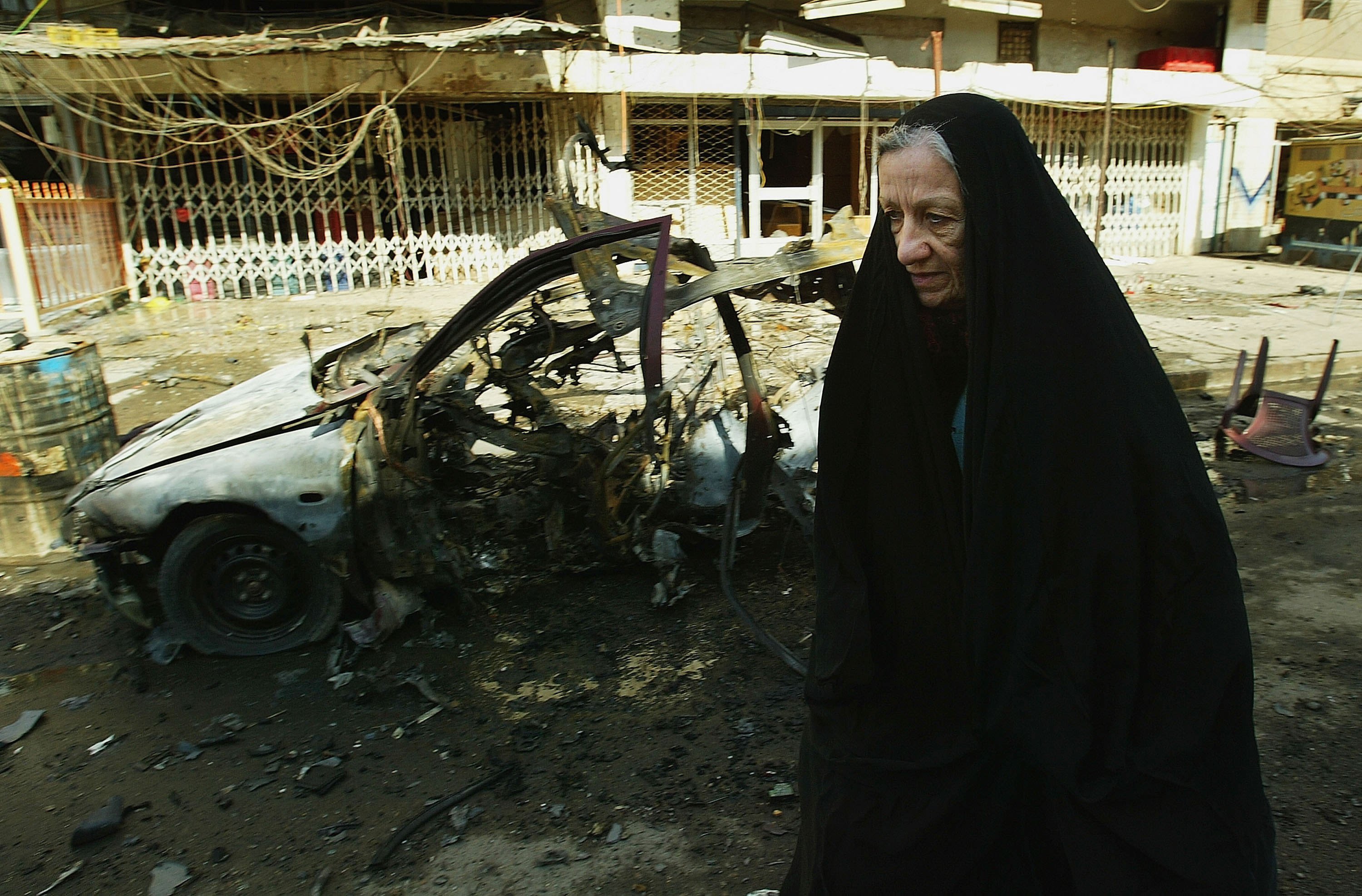
The aftermath of yet another explosion in Baghdad, on November 12, 2006. Getty
The aftermath of yet another explosion in Baghdad, on November 12, 2006. Getty
November 23: More than 200 people are killed in five car bombs in Sadr city, Baghdad, in one of the deadliest attacks of the conflict so far. Shiite militias fire mortar bombs into Sunni neighbourhoods in Baghdad, killing and wounding dozens.
December 30: Saddam is executed by hanging. The execution and taunting of Saddam before his death is secretly filmed by a witness, stirring further tensions within Iraq.

January 10: Mr Bush announces that another 20,000 soldiers will be sent to Iraq, and a new strategy will focus on protecting the population, rather than killing insurgents. The approach becomes known as the “Surge,” and envisages a closer partnership between US and Iraqi forces and tribes, as well as American forces being stationed closer to Iraqi communities. US forces organise 100,000 Sunni tribesmen into militia groups to fight Al Qaeda.
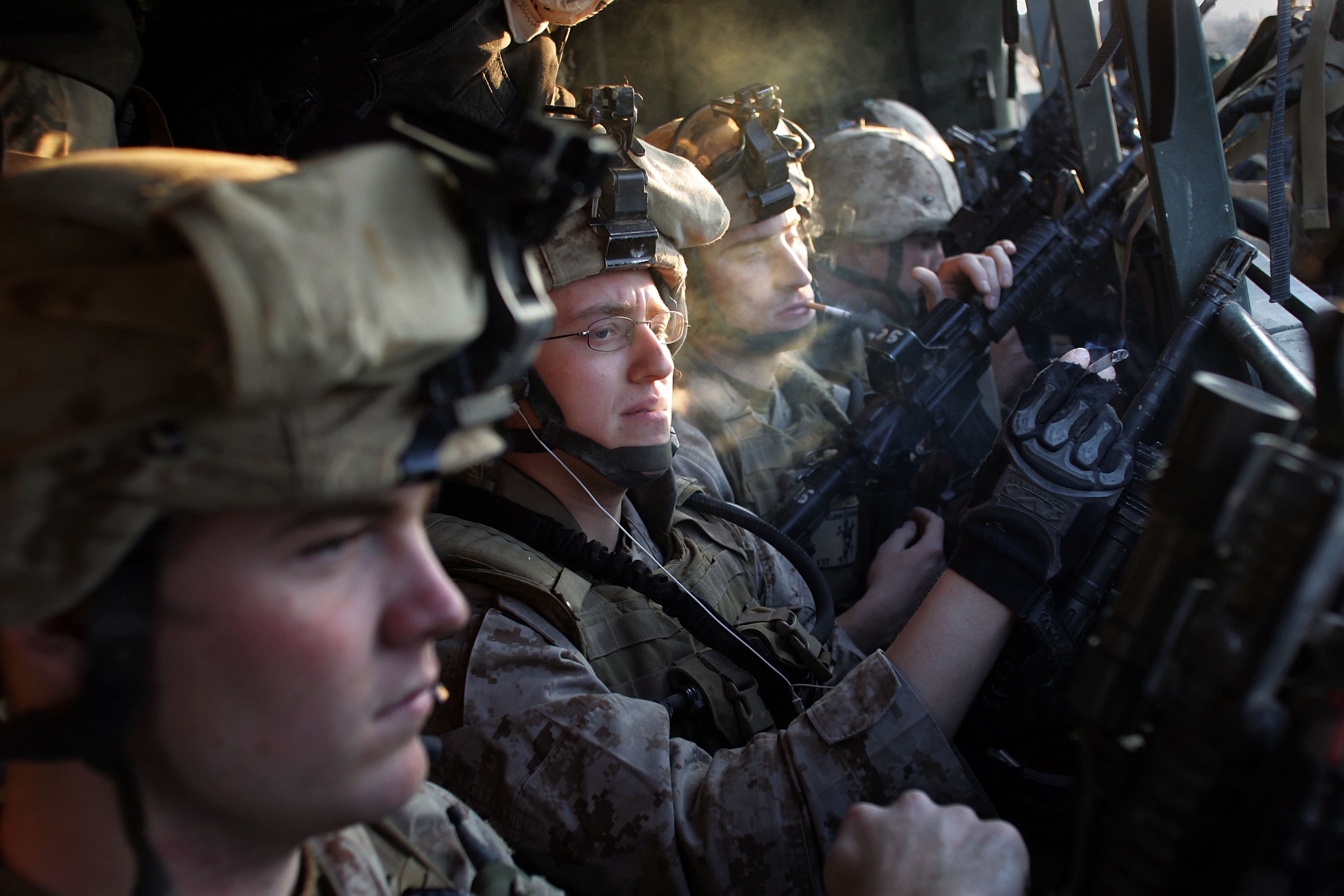
US Marines prepare to leave for a military operation at Camp Ramadi in the Anbar province of Iraq on January 14, 2007. Getty
US Marines prepare to leave for a military operation at Camp Ramadi in the Anbar province of Iraq on January 14, 2007. Getty
January 22: Nearly 100 people are killed when car bombs go off in a market in central Baghdad, one of many similar attacks during this period.
February 3: A bomb explodes in a market in Sadr city, killing 135.
March 28: At least 70 Sunni men are found dead in Tal Afar, after a series of bombings in the northern Iraqi town leaves 85 dead.
April 12: A suicide bomber kills an Iraqi MP and injures 22 others in parliament.
May 8: In a vote demanding a timetable for the withdrawal of US forces from Iraq, 144 Iraqi MPs out of 275 back the call.
July 12: Two Reuters photographers and five civilians are killed by a US Apache helicopter in Baghdad. US video footage of the incident would later be released by Wikileaks.
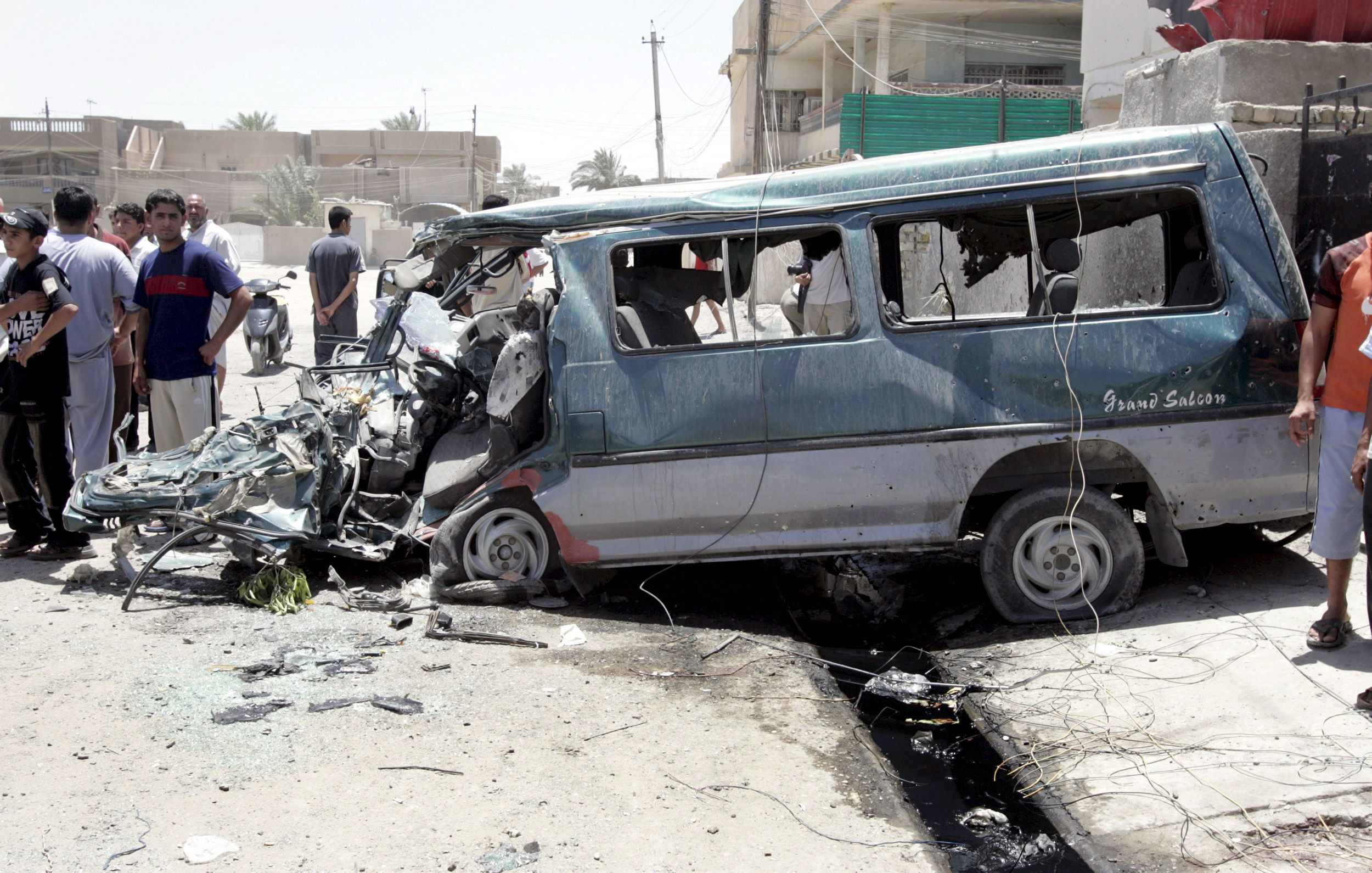
The site where an Iraqi photographer and driver working for Reuters were killed in a US air strike in Baghdad on July 12, 2007. EPA
The site where an Iraqi photographer and driver working for Reuters were killed in a US air strike in Baghdad on July 12, 2007. EPA
November: US troop casualties fall from a high of 121 in May to 42 in September. The US military declares an end to the Surge strategy and begins to drawdown troop numbers from a high of 168,000. With the Jaish Al Mahdi observing a ceasefire and Al Qaeda largely routed by US forces and their Sunni tribal allies, civilian casualties begin to drop sharply.

February 22: Moqtada Al Sadr reissues an order for his militia, Jaish Al Mahdi, to uphold a ceasefire for a second period of six months.
February 25: An “Awakening council” leader is killed by a suicide bomber in Fallujah. The Awakening is a term given to the mobilisation of Sunni tribal fighters, paid by the US, to fight Al Qaeda.
March 20: Mr Bush says the war has been "longer and harder and more costly than we anticipated”.
March 23: US military deaths reach 4,000.
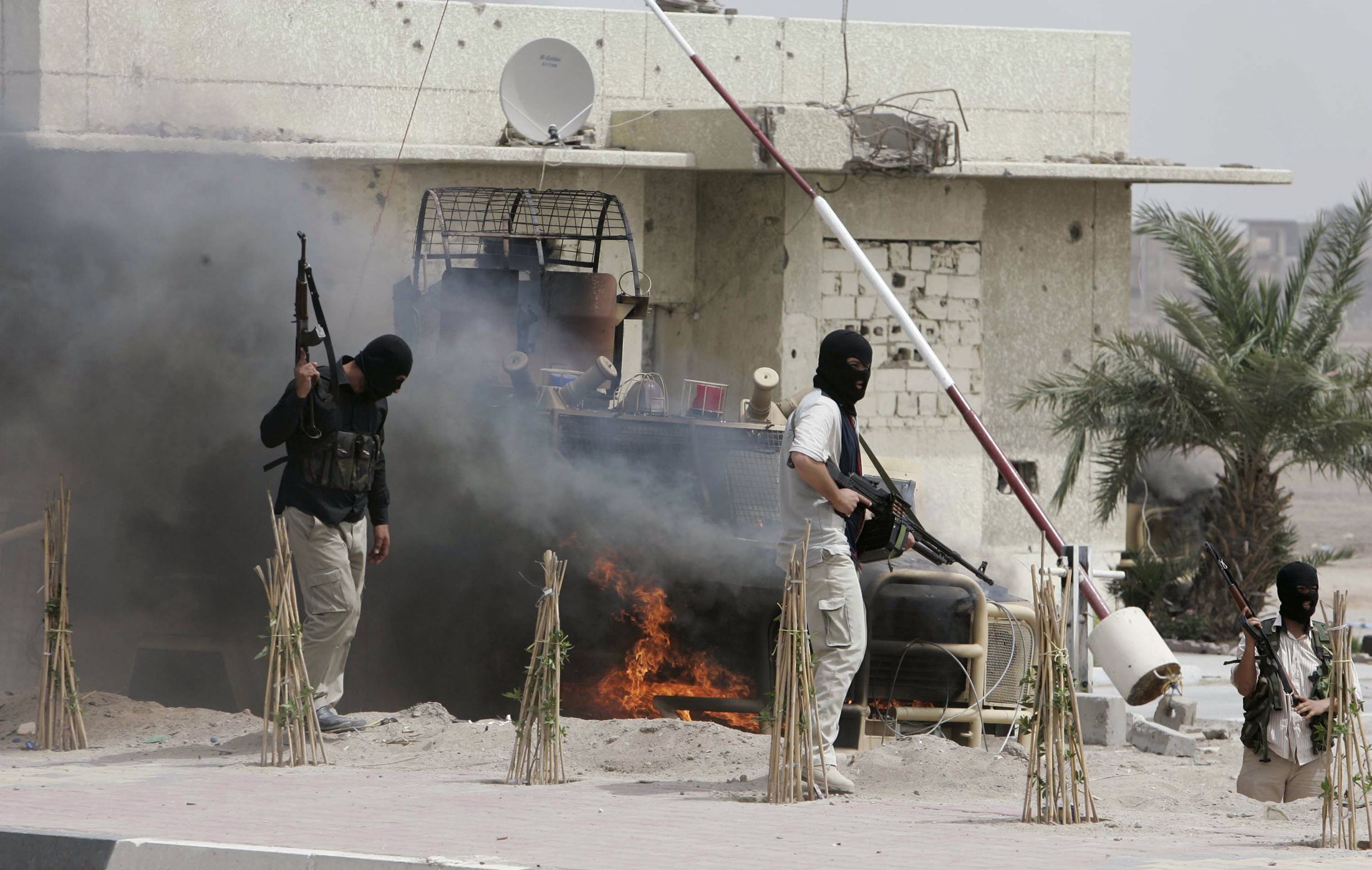
Jaish Al Mahdi fighters stand guard next to a burning Iraqi army vehicle in Basra on March 30, 2008. Reuters
Jaish Al Mahdi fighters stand guard next to a burning Iraqi army vehicle in Basra on March 30, 2008. Reuters
March 26: Prime Minister Nouri Al Maliki sends two divisions of Iraqi soldiers, backed by the US and British army, to the southern port city of Basra to expel Jaish Al Mahdi, which has taken over the city following a ceasefire agreement with the British army. Hundreds are killed in the fighting and Al Sadr flees to Iran.
April 8: US presidential candidate Barack Obama says the war is a "massive strategic blunder" but says he would support a continued US presence as long as Iran’s influence in Iraq could be limited and that violence levels remain subdued.
May 2: Future prime minister Haidar Al Abadi joins a delegation in Tehran, where Iran is presented with evidence of supporting militias and destabilising Iraq. Both sides later claim there is no strong evidence of Iranian meddling.
August 19: Commandos under the control of Mr Al Maliki raid the Sunni-majority Diyala provincial council, killing a local political adviser and sparking a gun battle with Iraqi police. Critics of the Prime Minister say the raid is a sign of his worsening sectarian tendencies.
August 21: US and Iraqi negotiators agree that US forces should leave Iraq by the end of 2011. The decision sparks an effort by Republican politicians to extend the deadline.
October 28: The US military confirms that a Special Forces helicopter raid across the Syrian border has killed Al Qaeda commander Abu Ghadiyah. The US gives intelligence to the Iraqi government that the regime of Bashar Al Assad in Syria has harboured Al Qaeda terrorists for transit to Iraq.
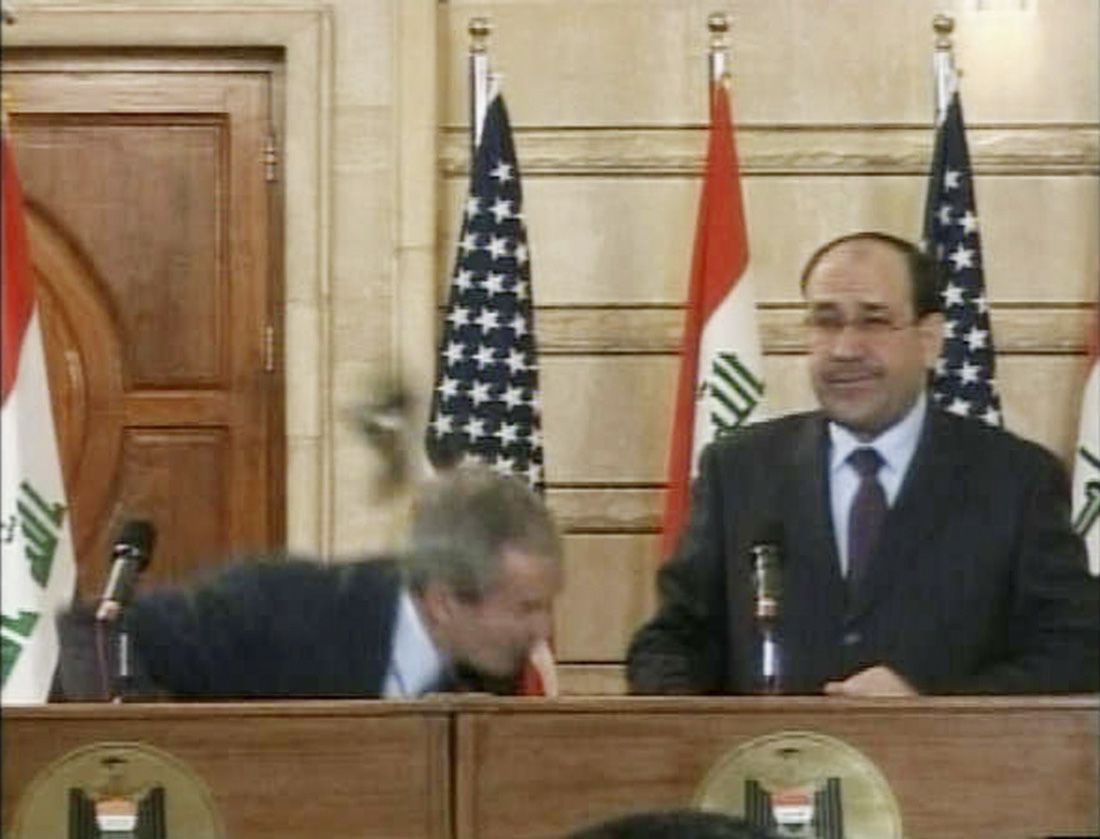
Screen grab from a video of US President George W Bush ducking from a shoe thrown at a press conference in Baghdad on December 14, 2008. Reuters
Screen grab from a video of US President George W Bush ducking from a shoe thrown at a press conference in Baghdad on December 14, 2008. Reuters
December 14: Mr Bush makes his final visit to Iraq to sign a co-operation agreement between Iraq and the US known as the Strategic Framework Agreement. At a press conference with Mr Al Maliki, Munthadar Al Zaidi, a journalist, throws his shoes at Mr Bush. Mr Al Zaidi is severely beaten and jailed for six months.

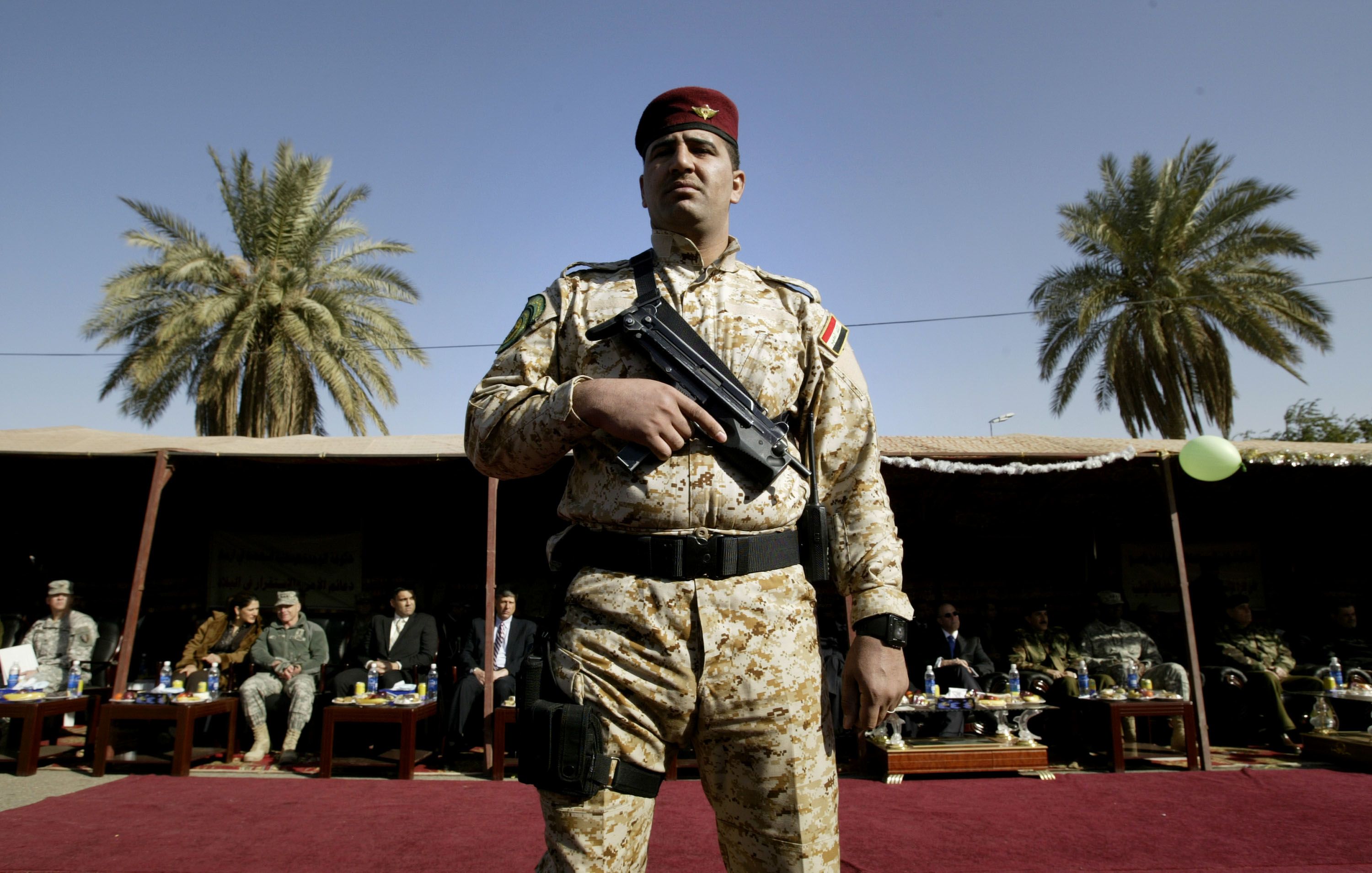
An Iraqi soldier stands guard at the Green Zone handover ceremony on January 1, 2009 in Baghdad. Getty
An Iraqi soldier stands guard at the Green Zone handover ceremony on January 1, 2009 in Baghdad. Getty
January 1: Iraq’s government takes full control of the Green Zone from US forces. The area is home to offices and residences of diplomats, embassies and Iraqi government officials. American forces have been responsible for securing the area until this point.

US President Barack Obama announces the withdraw of combat forces from Iraq on February 27, 2009. EPA
US President Barack Obama announces the withdraw of combat forces from Iraq on February 27, 2009. EPA
February 27: US President Barack Obama announces Washington’s decision to withdraw most American troops by August 31, 2010. Mr Obama says 50,000 troops will remain for smaller missions and to train Iraqi soldiers.
April 23: At least 80 people are killed in three suicide bombings in Baghdad, making it the biggest daily death toll since early 2008. A female standing in a group of women and children receiving aid reportedly set off one of the bombs.
June 30: US troops complete their withdrawal from Iraqi cities, including Baghdad, and officially transfer responsibility of security to Iraqi forces. Mr Al Maliki names June 30 “National Sovereignty Day” and a public holiday is declared.
August 19: In the worst attack since April 23, two bomb attacks kill 95 people and injure more than 600 in Baghdad.
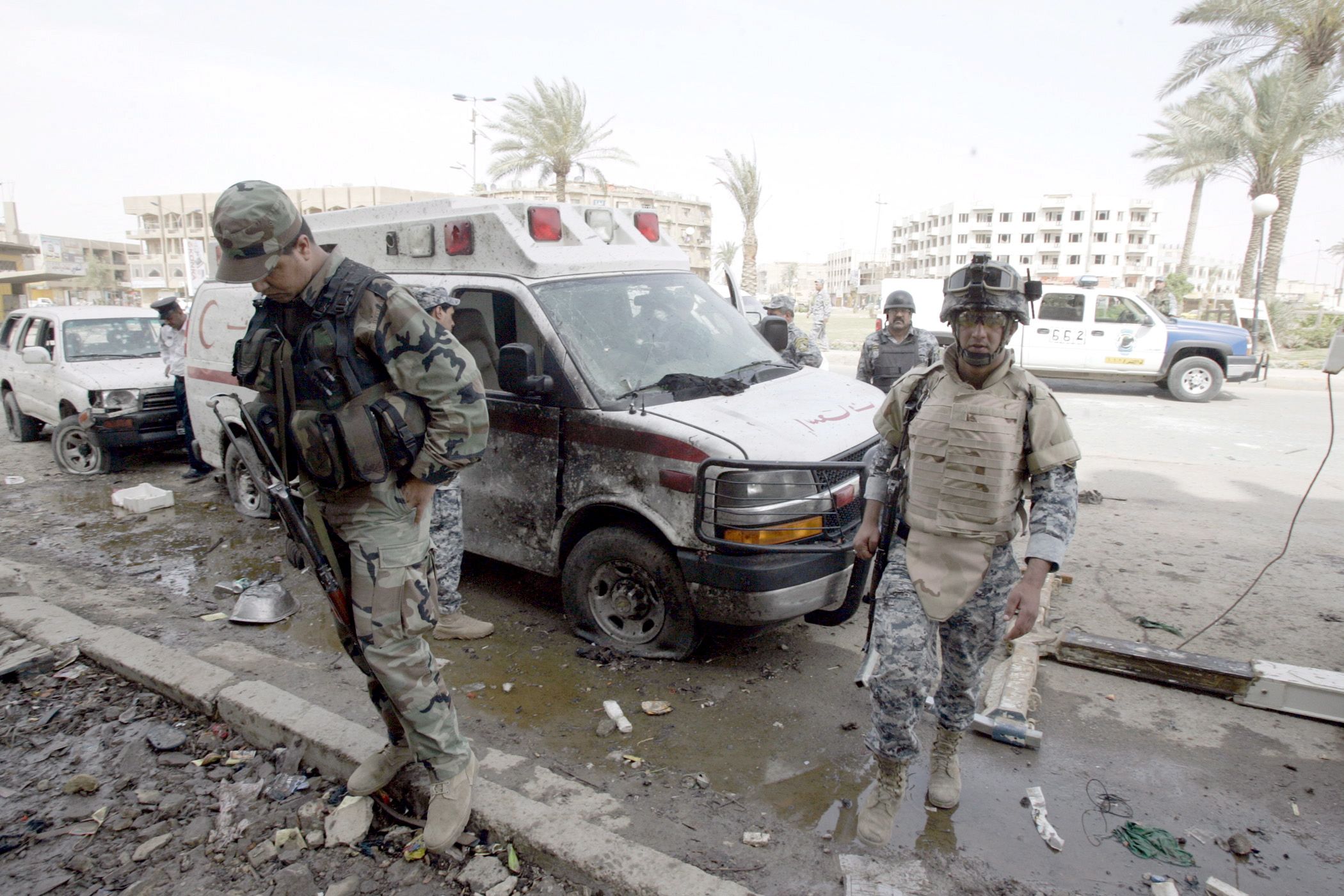
Iraqi policemen inspect the site of a suicide attack in Baghdad's Karrada district on April 23, 2009. EPA
Iraqi policemen inspect the site of a suicide attack in Baghdad's Karrada district on April 23, 2009. EPA
October 25: Two suicide bombings in Baghdad kill at least 155 people and injure 700 others. It is the deadliest attack since 2007, raising questions over the safety of the country and Mr Al Maliki’s assurances that Iraq is secure. Al Qaeda claims responsibility for the attack.
December 8: At least 120 people are killed and 400 injured when five bombs are set off near government buildings in Baghdad. Al Qaeda once again claims responsibility for the attacks. Civilian deaths at the end of 2009 are recorded at 5,382 by the war monitor Iraq Body Count. This is down from the civil war high of 30,000 per year, but attacks appear well-planned and carefully targeted at government and civilian sites.

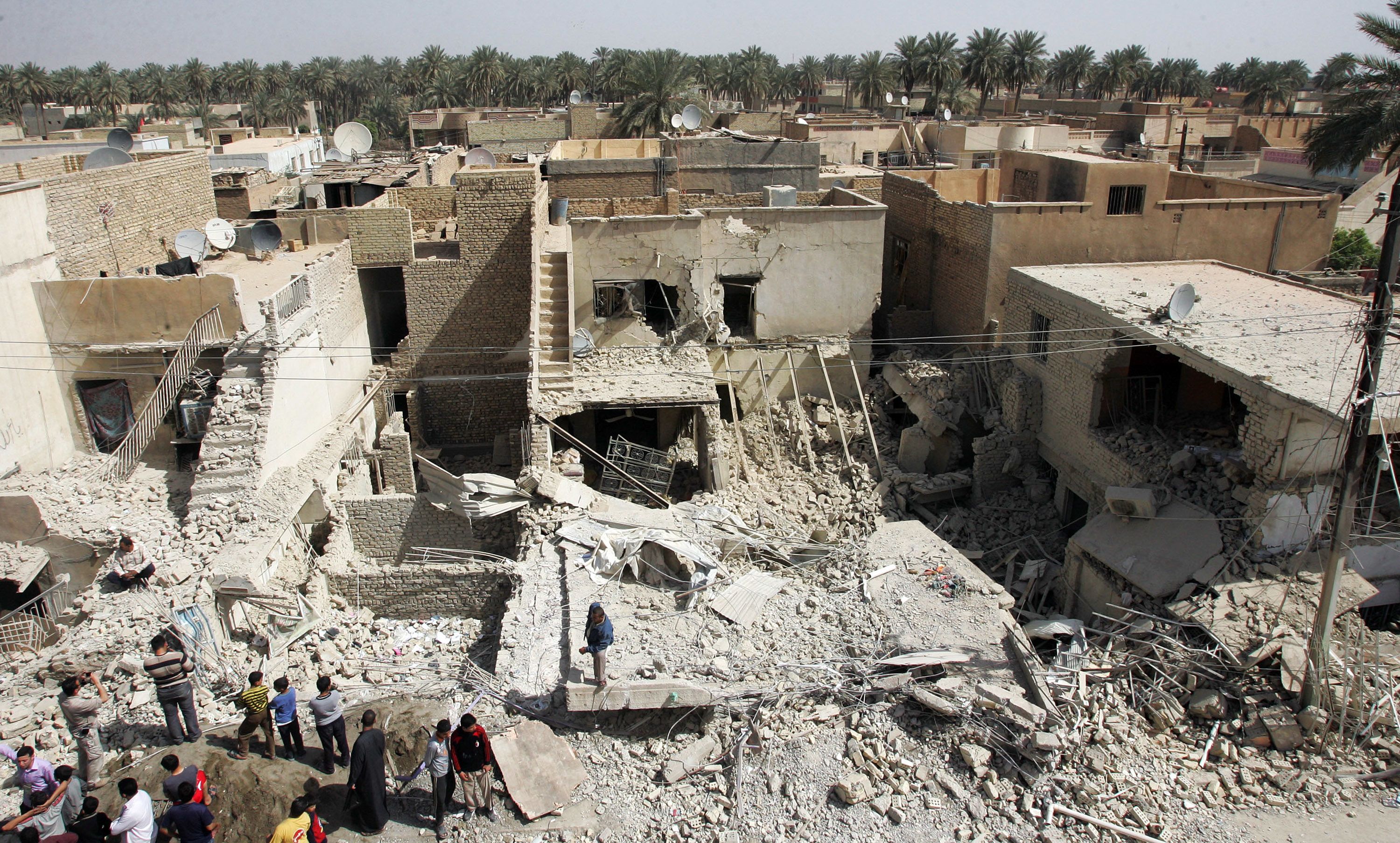
Buildings are destroyed by a barrage of mortar and bombs in north Baghdad on March 7, 2010. Getty
Buildings are destroyed by a barrage of mortar and bombs in north Baghdad on March 7, 2010. Getty
March 7: Explosions go off as Iraqis vote in a general election with bombers killing at least 38 people. The country’s electoral commission says 62 per cent of Iraqis turned out to vote.
November 25: Iraqi President Jalal Talabani officially names Nouri Al Maliki for a second term as Prime Minister in a televised ceremony.

Iraqi President Jalal Talabani (centre R) hands Nouri Al Maliki (centre L) a formal request to form the next government on November 25, 2010. Getty
Iraqi President Jalal Talabani (centre R) hands Nouri Al Maliki (centre L) a formal request to form the next government on November 25, 2010. Getty
December 1: Parliament approves a new government of all major factions.

January: Populist Shiite cleric Moqtada Sadr returns after four years of self-imposed exile in Iran. In his first public statement, he urges his followers to resist the “occupiers” of Iraq.
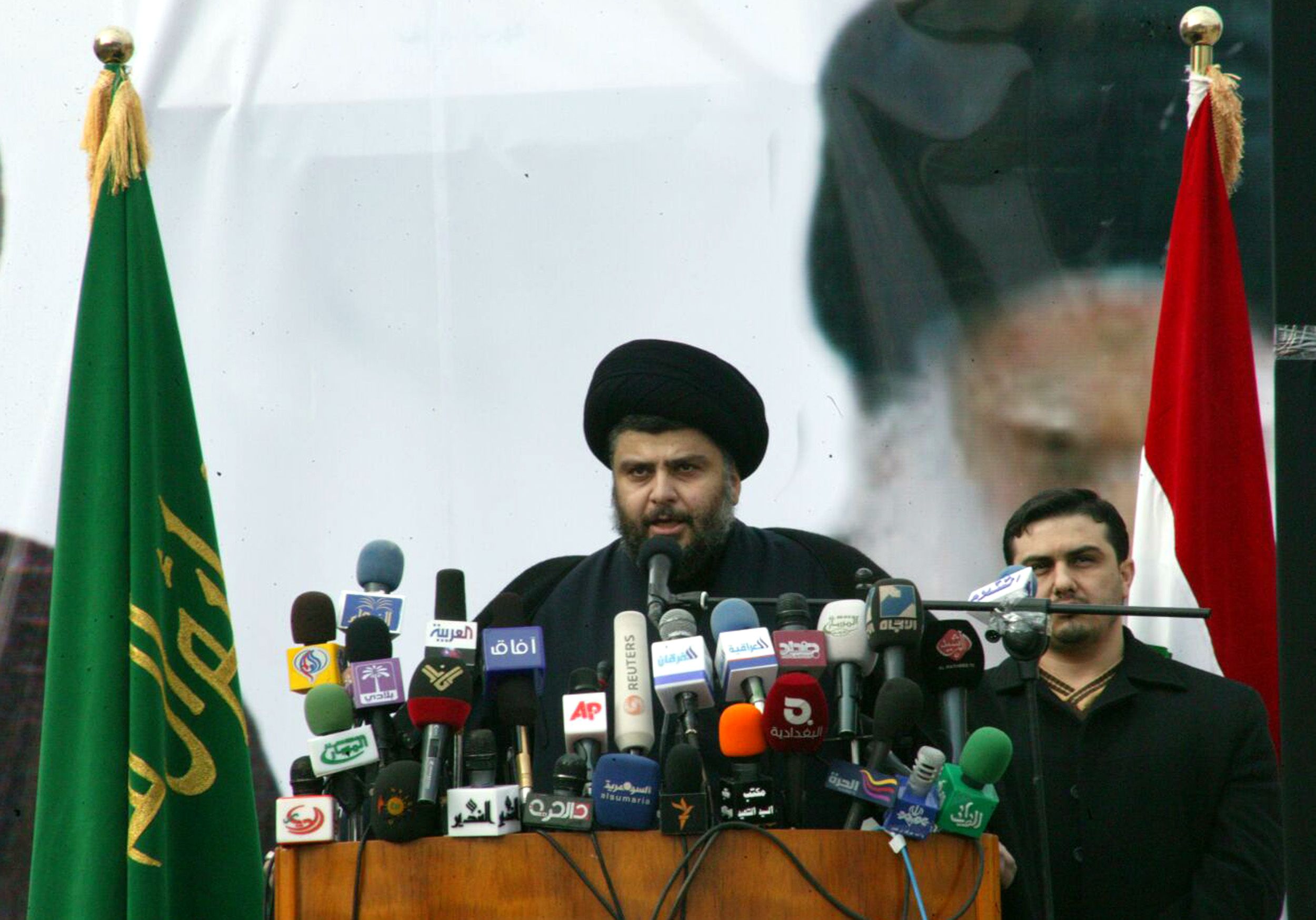
Moqtada Al Sadr, leader of Iraq's Sadrist movement, delivers a speech to his supporters at a gathering in Najaf on January 8, 2011. EPA
Moqtada Al Sadr, leader of Iraq's Sadrist movement, delivers a speech to his supporters at a gathering in Najaf on January 8, 2011. EPA
February 25: A "day of rage" is declared as tens of thousands of Iraqis protest against Mr Al Maliki’s government. At least 23 people are killed and hundreds injured in a sign of Mr Al Maliki’s growing authoritarianism.
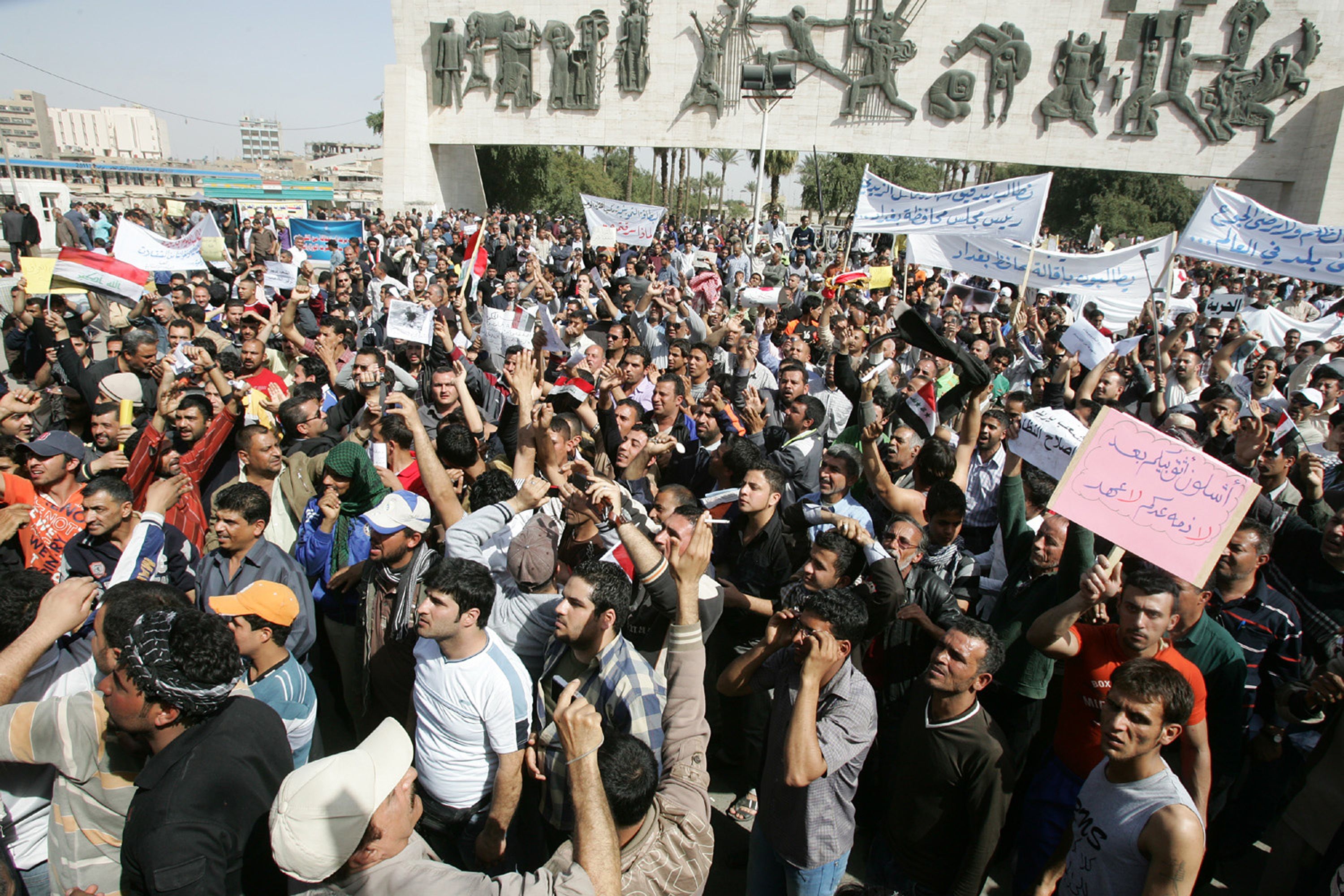
Iraqis protest against corruption and lack of services on February 25, 2011 in Baghdad. Getty
Iraqis protest against corruption and lack of services on February 25, 2011 in Baghdad. Getty
August 15: At least 89 people die after insurgents launch more than 40 co-ordinated attacks throughout the country, mostly on civilians. Three hundred are injured in suicide attacks, car bombings and gunfire.
December 15: The US military formally declares the end of the Iraq War in a ceremony in Baghdad, as the last US forces leave the country.
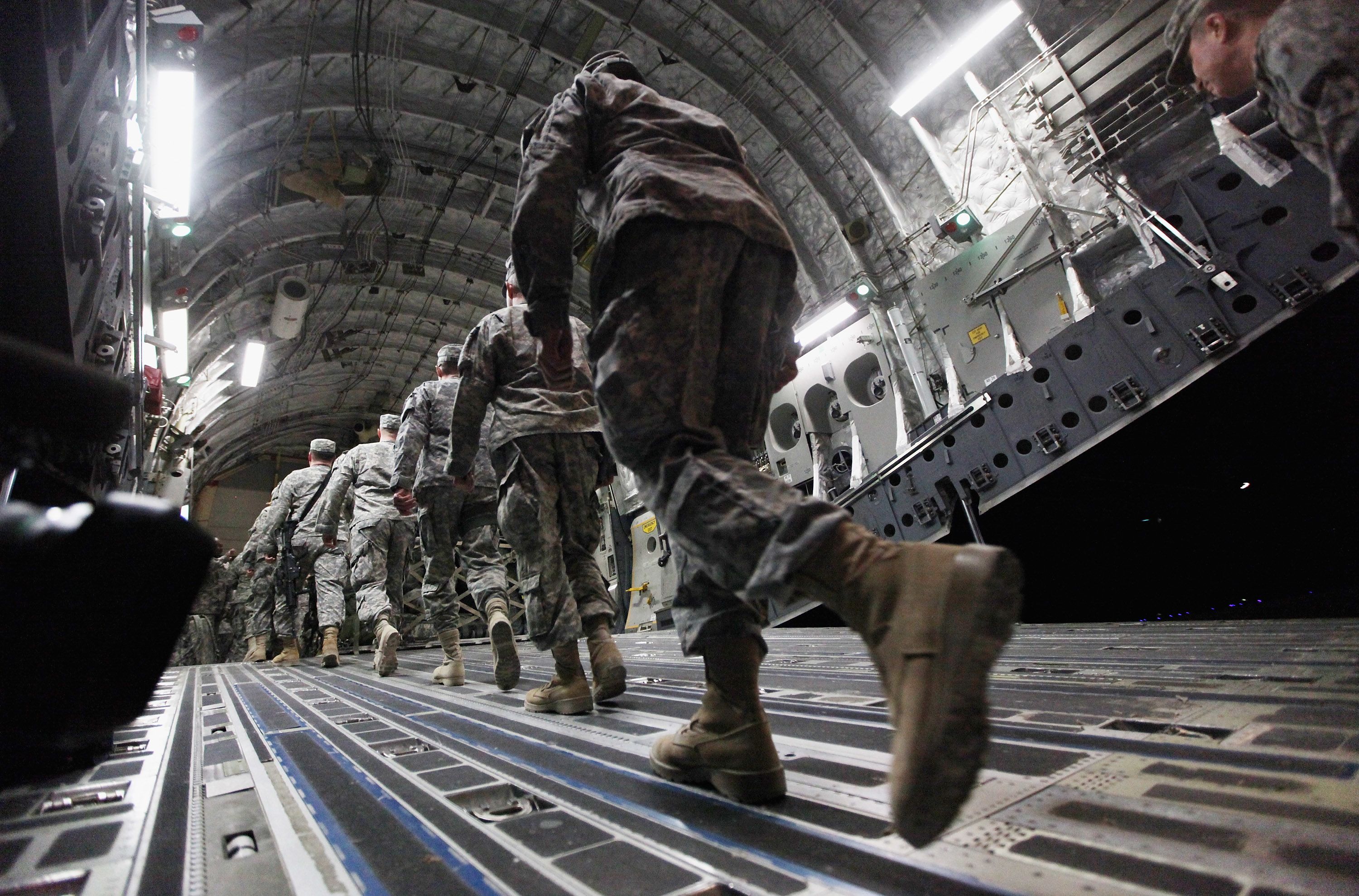
US soldiers board a plane to depart Iraq at Camp Adder, now known as Imam Ali Base, on December 17, 2011. Getty
US soldiers board a plane to depart Iraq at Camp Adder, now known as Imam Ali Base, on December 17, 2011. Getty

March 5: ISIS — then called ISI and previously Al Qaeda in Iraq — insurgents kill 27 policemen in a highly organised raid in Haditha, a Sunni-majority town in Anbar. Attackers are dressed as security forces and film the violence, prompting analysts to warn the terrorist group is far from defeated.

A bullet-riddled vehicle belonging to militants at the site of an attack in Haditha on March 5, 2012. Reuters
A bullet-riddled vehicle belonging to militants at the site of an attack in Haditha on March 5, 2012. Reuters
March 27: The Arab League holds a summit in Baghdad for the first time since 1990.
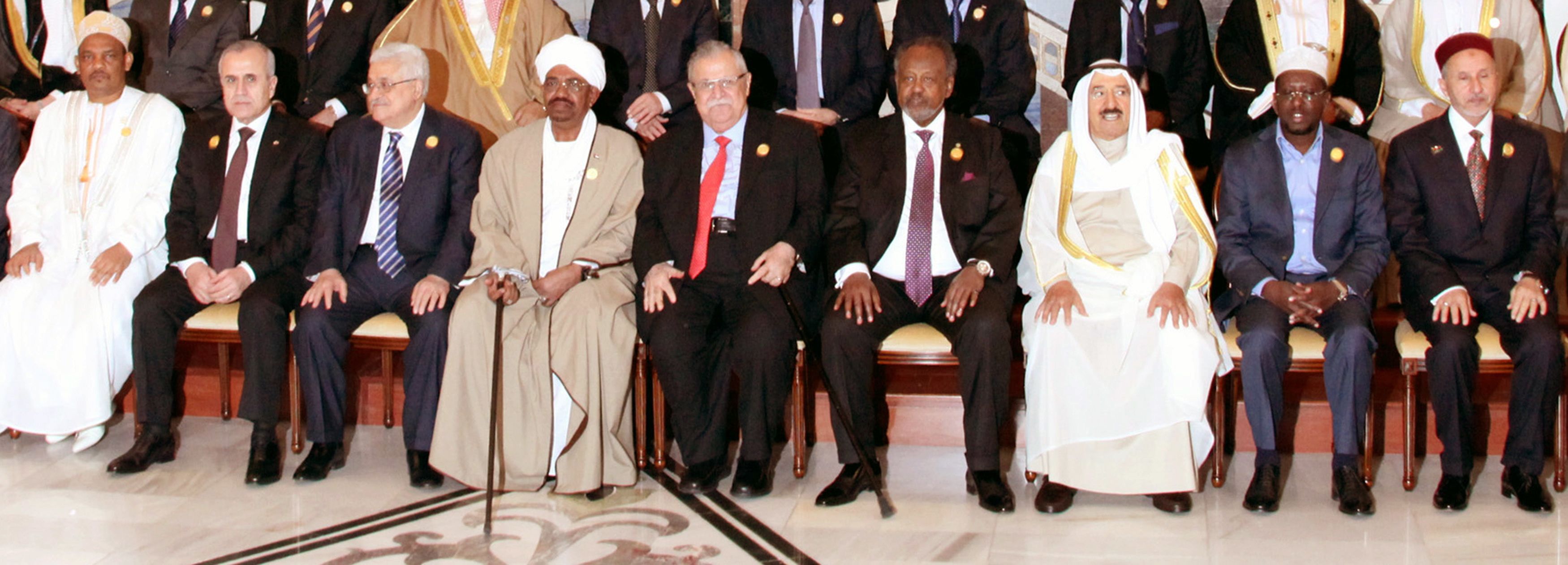
Presidents and emirs attend the Arab League summit, the first in two years, in Baghdad amid high security, on March 29, 2012. EPA
Presidents and emirs attend the Arab League summit, the first in two years, in Baghdad amid high security, on March 29, 2012. EPA
May 21: Kurdish Oil Minister Ashti Hawrami says that the semi-autonomous region of Kurdistan is building a pipeline to Turkey that will be able to export one million barrels of oil per day, independently of Baghdad.
June 12: In a sign that Al Qaeda — now called the Islamic State of Iraq — are regenerating, nearly 100 people are killed in seven co-ordinated attacks across Iraq, a worrying echo of the height of violence between 2005 and 2008.
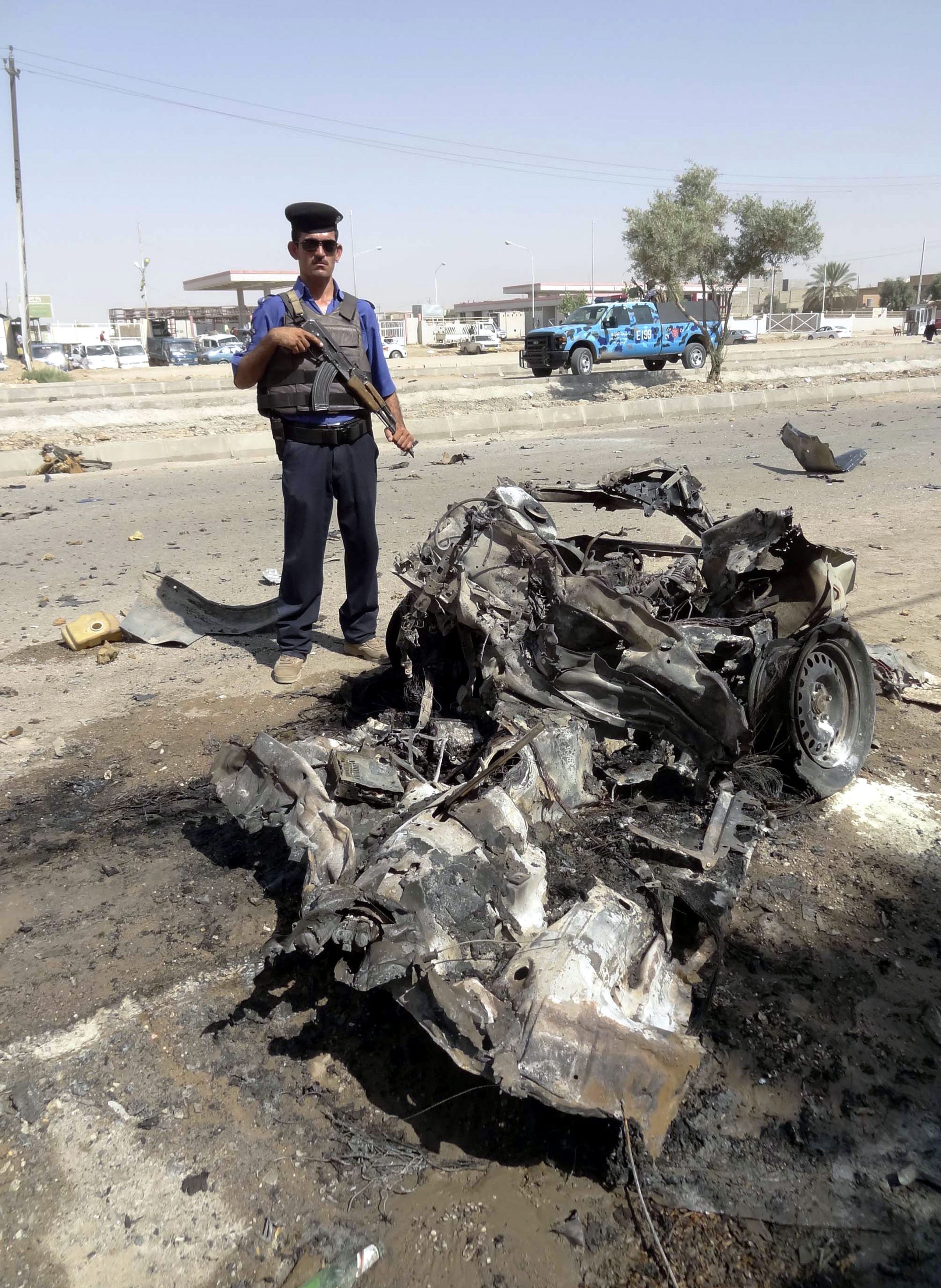
An Iraqi policeman inspects the site of a car bomb attack in Kirkuk, northern Iraq, on July 23, 2012. EPA
An Iraqi policeman inspects the site of a car bomb attack in Kirkuk, northern Iraq, on July 23, 2012. EPA
July 23: ISIS launch another wave of as many as 40 attacks across Iraq, killing at least 116 people and injuring hundreds.
July 28: Iraqi soldiers and Kurdish Peshmerga militia fighters are engaged in a stand off at the Fishkhabur border crossing with Syria, a sign of worsening tension between Baghdad and Erbil over oil rights and disputed territory.
August 16: 128 people are killed in another co-ordinated wave of ISIS attacks.
November 10: A political row breaks out in Baghdad over a $4.2 billion arms deal with Russia, after Iraqi officials allege the deal is rigged with “kickbacks,” for weapons purchases. The deal is cancelled.
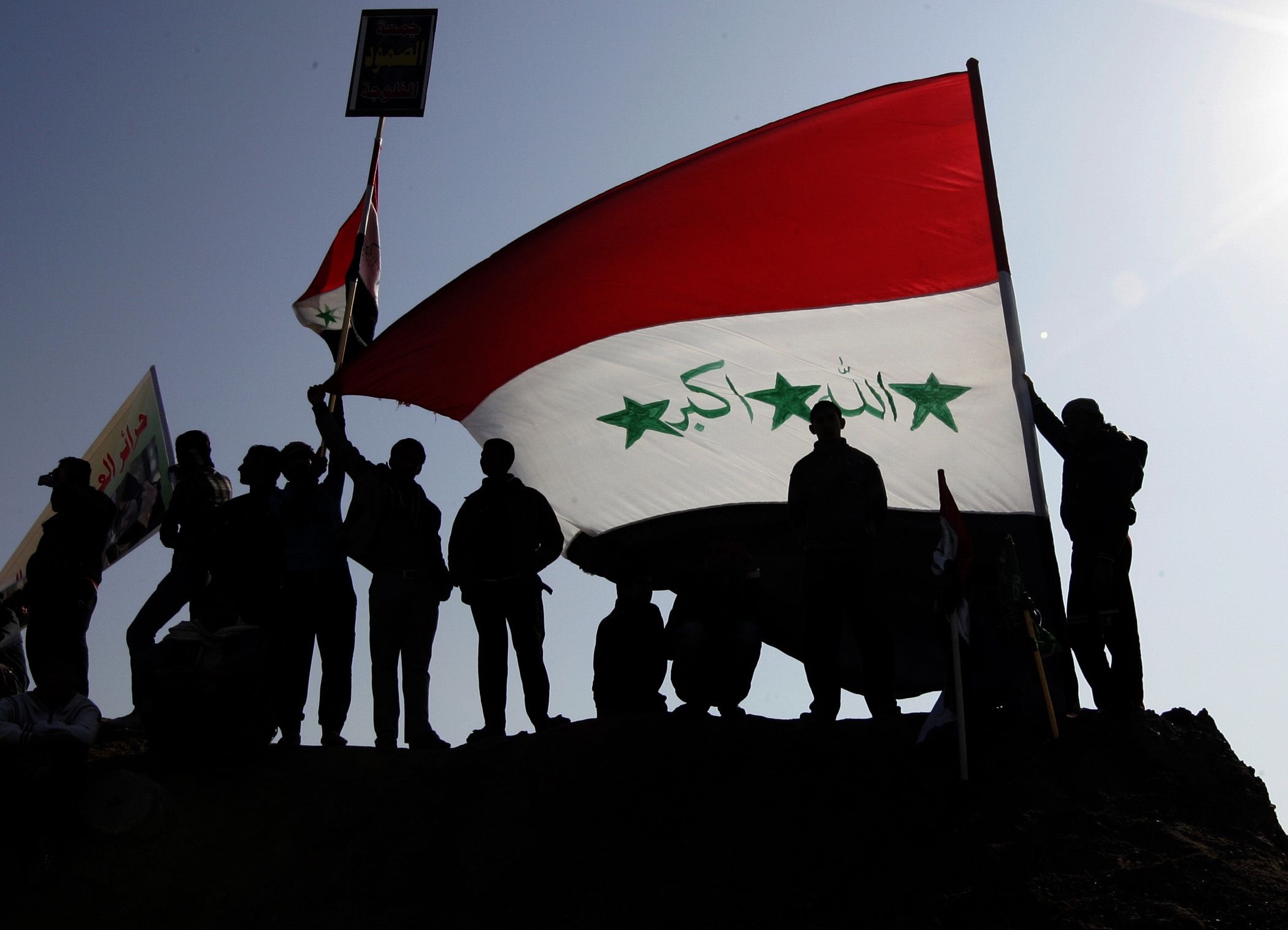
Iraqi Sunni Muslims wave a giant national flag during an anti-government demonstration in Fallujah on January 4, 2013. EPA
Iraqi Sunni Muslims wave a giant national flag during an anti-government demonstration in Fallujah on January 4, 2013. EPA
December: Protests against harsh security crackdowns break out in Fallujah, Ramadi and Tikrit. Sunni protesters say men are being arbitrarily jailed without evidence while the government holds back pensions for former army officers. The demonstrations last until December 2013 when the Iraqi army tries to break up protest camps.

January: Iraqi Oil Minister Abdul Karim Al Luaibi warns US oil company Exxon that it must choose between operating in the south of the country or the Kurdish region, another sign of Baghdad’s growing impatience with Kurdish oil deals.
May 20: A co-ordinated attack by ISIS with a dozen car bombs kills more than 80 people in Baghdad.
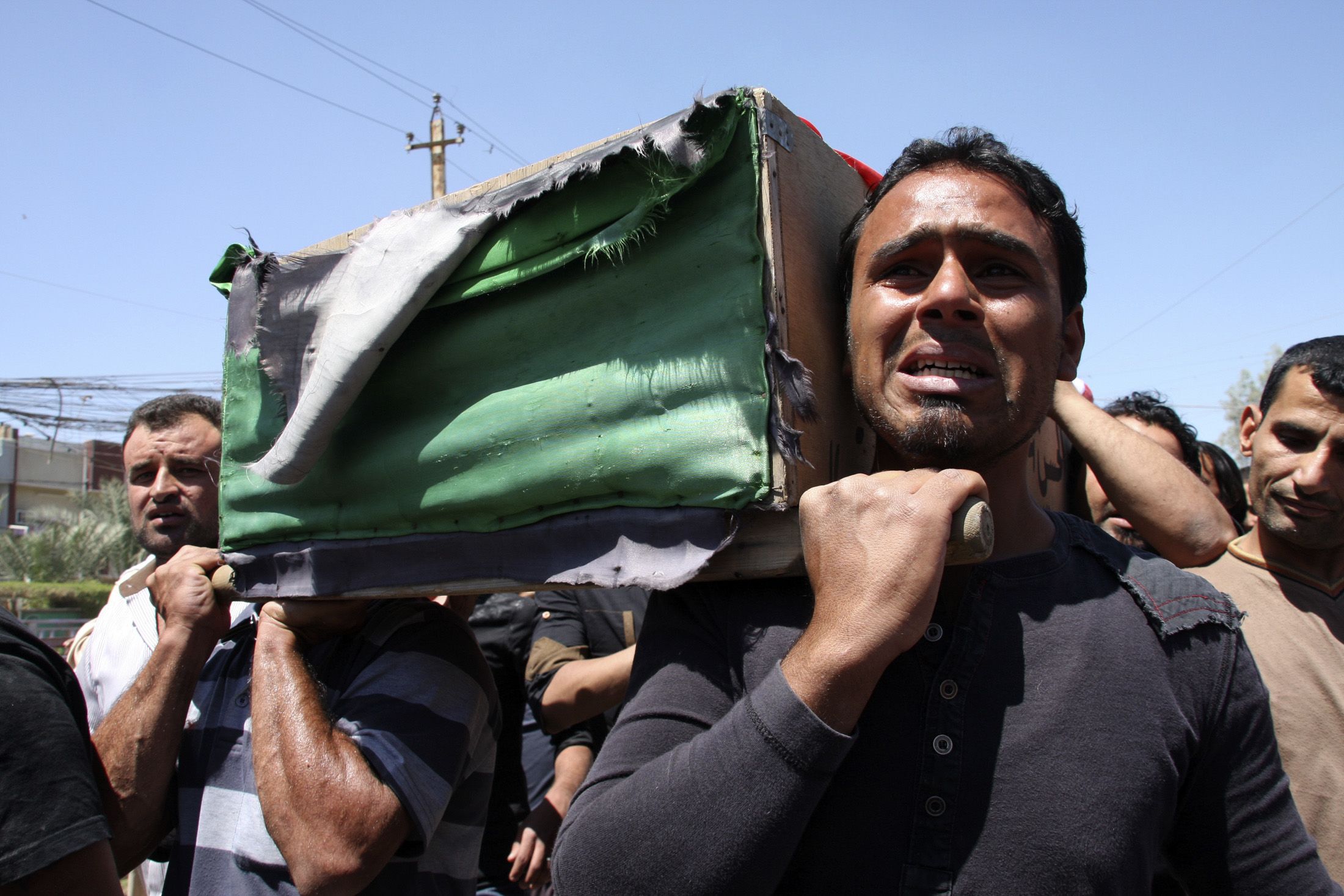
Residents carry a coffin during the funeral of an Iraqi soldier in Baghdad on April 25, 2013. Reuters
Residents carry a coffin during the funeral of an Iraqi soldier in Baghdad on April 25, 2013. Reuters
April 23: At least 42 Sunni protesters are shot dead at a rally in Hawija, northern Iraq, during an attempt by the Iraqi army to break up their protest camp. Local insurgents exploit growing anger in the Sunni community and hundreds are killed in three days of clashes across central Iraq, an early indicator of the chaos that accompanied ISIS’s rise.
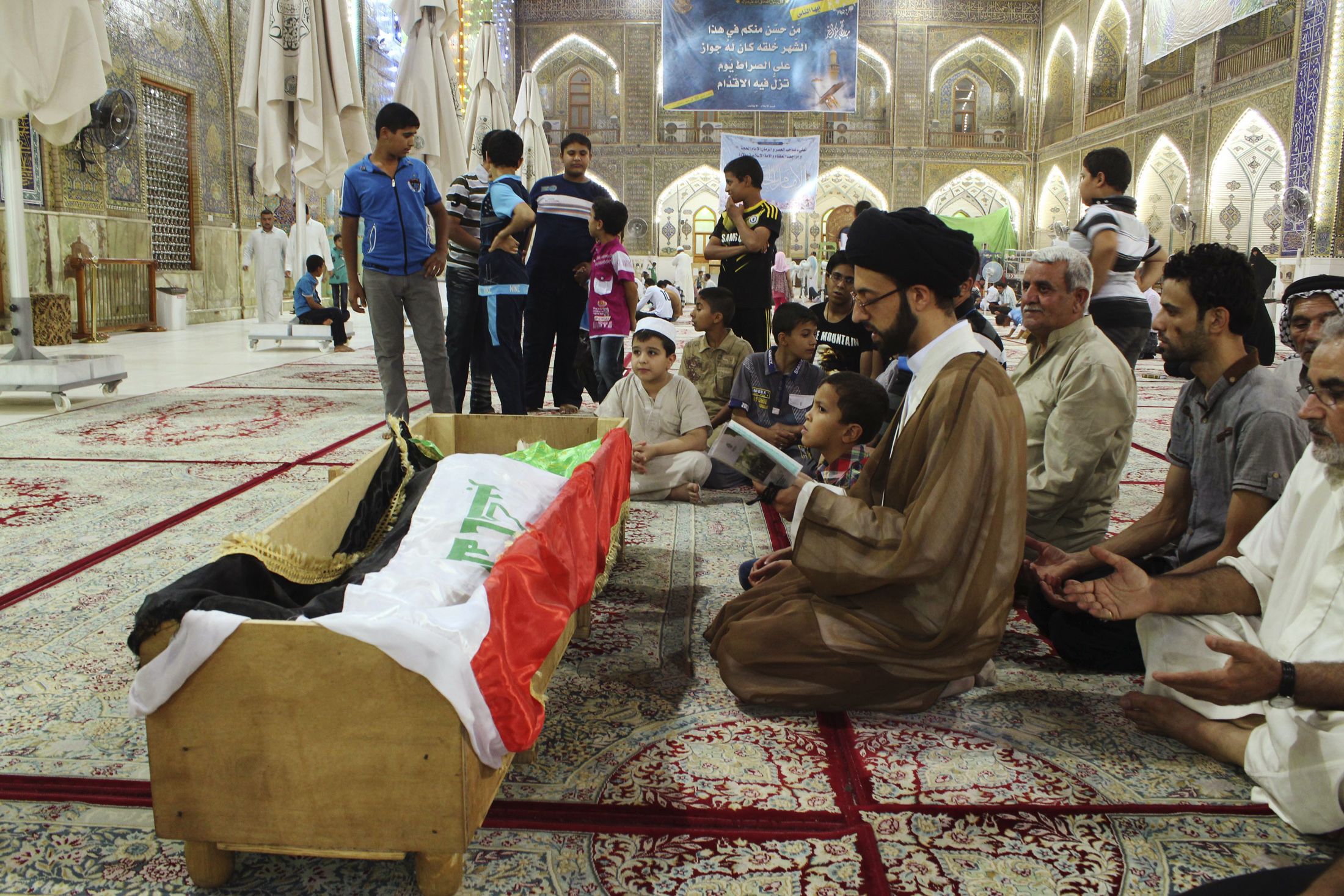
Mourners pray at the coffin of a victim killed in an attack on a prison in Taji, during a funeral at the Imam Ali shrine in Najaf on July 22, 2013. Reuters
Mourners pray at the coffin of a victim killed in an attack on a prison in Taji, during a funeral at the Imam Ali shrine in Najaf on July 22, 2013. Reuters
July 22: Co-ordinated attacks on Abu Ghraib prison and another jail in Tikrit by ISIS fighters free between 500 and 1,000 prisoners, including veteran radical fighters. Hundreds are said to be apprehended and Iraq later moves its maximum security prison to the south of the country, far from the insurgency. But the move comes too late, and ISIS attacks dramatically escalate.
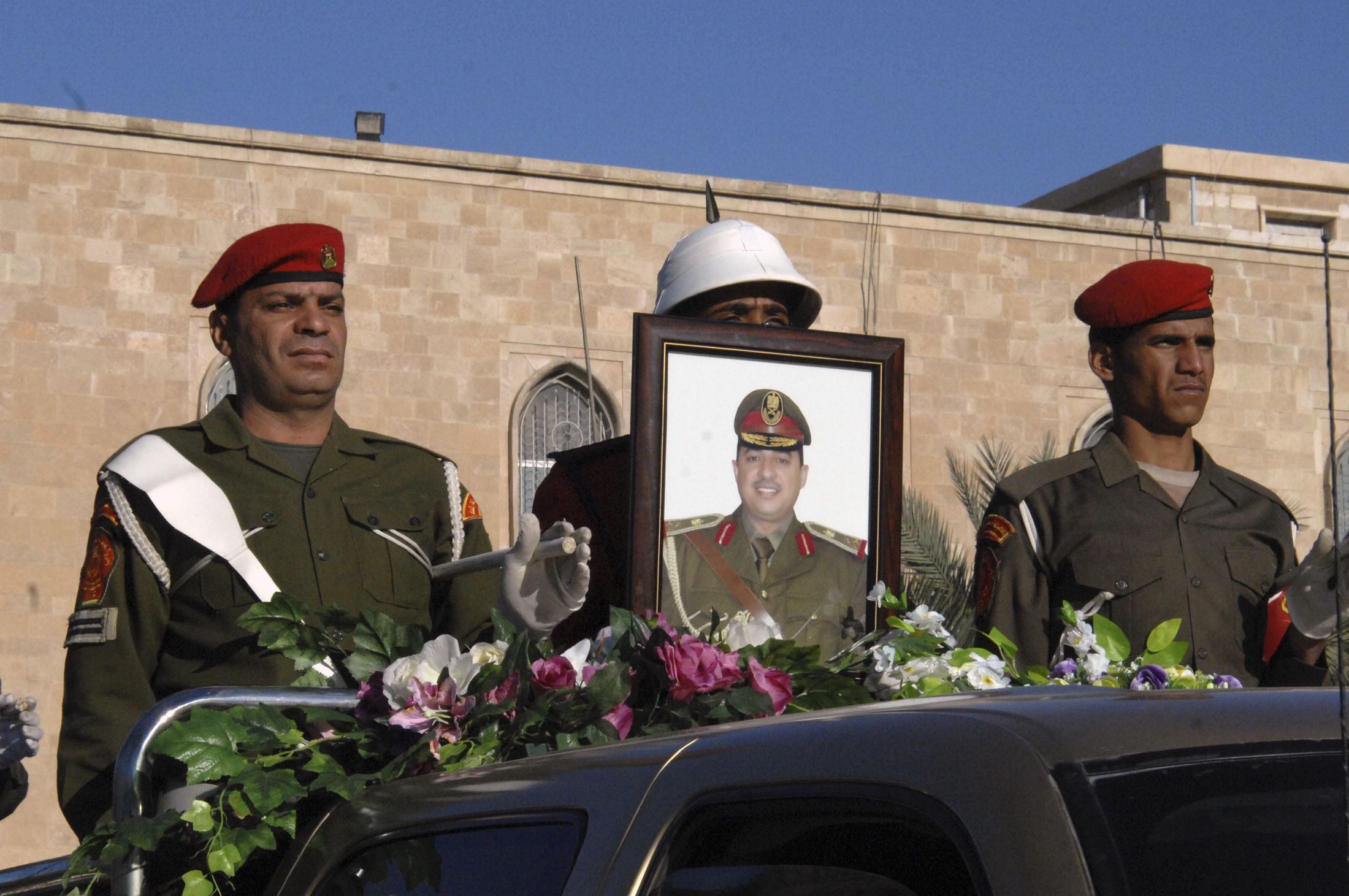
Funeral proceedings for a major general of the Iraqi army's 7th Division in Baghdad on December 22, 2013. Reuters
Funeral proceedings for a major general of the Iraqi army's 7th Division in Baghdad on December 22, 2013. Reuters
December: The leadership of Iraq’s 7th division of the army in Anbar are killed when a house they are raiding explodes after being rigged with bombs. The mixed Sunni-Shiite group is seen as one of the last non-sectarian units in the Iraqi army. ISIS soon gains control of Fallujah, Anbar’s second-largest city.

June 10: ISIS takes over Mosul, launching its largest offensive to date. Militants kill at least 600 Shiite inmates from Badoush prison during the attack.
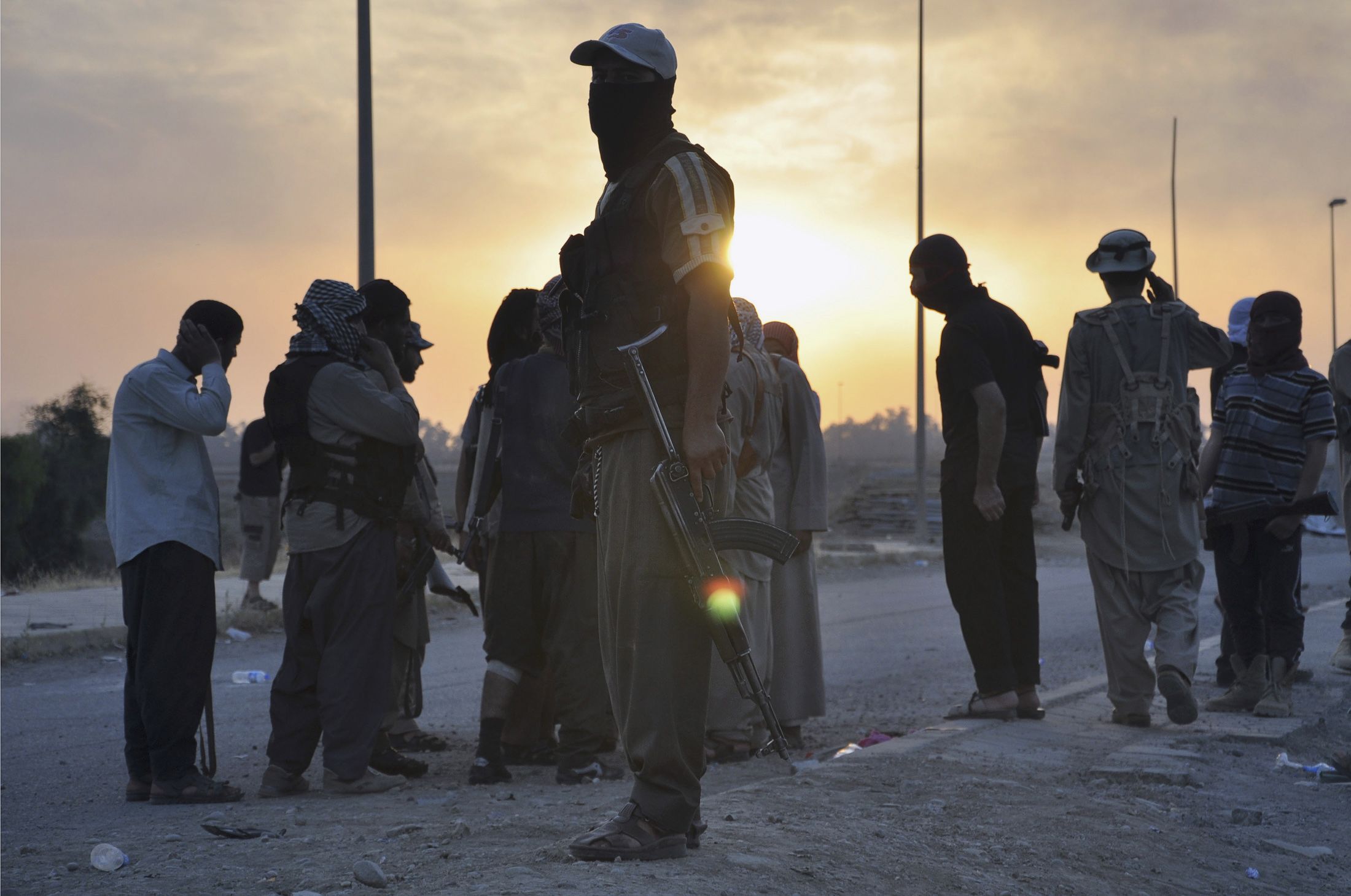
ISIS fighters stand guard at a checkpoint in the northern Iraq city of Mosul on June 11, 2014. Reuters
ISIS fighters stand guard at a checkpoint in the northern Iraq city of Mosul on June 11, 2014. Reuters
June 11: ISIS militants take over Tikrit.
June 18: Iraq asks the US to conduct air strikes against ISIS.
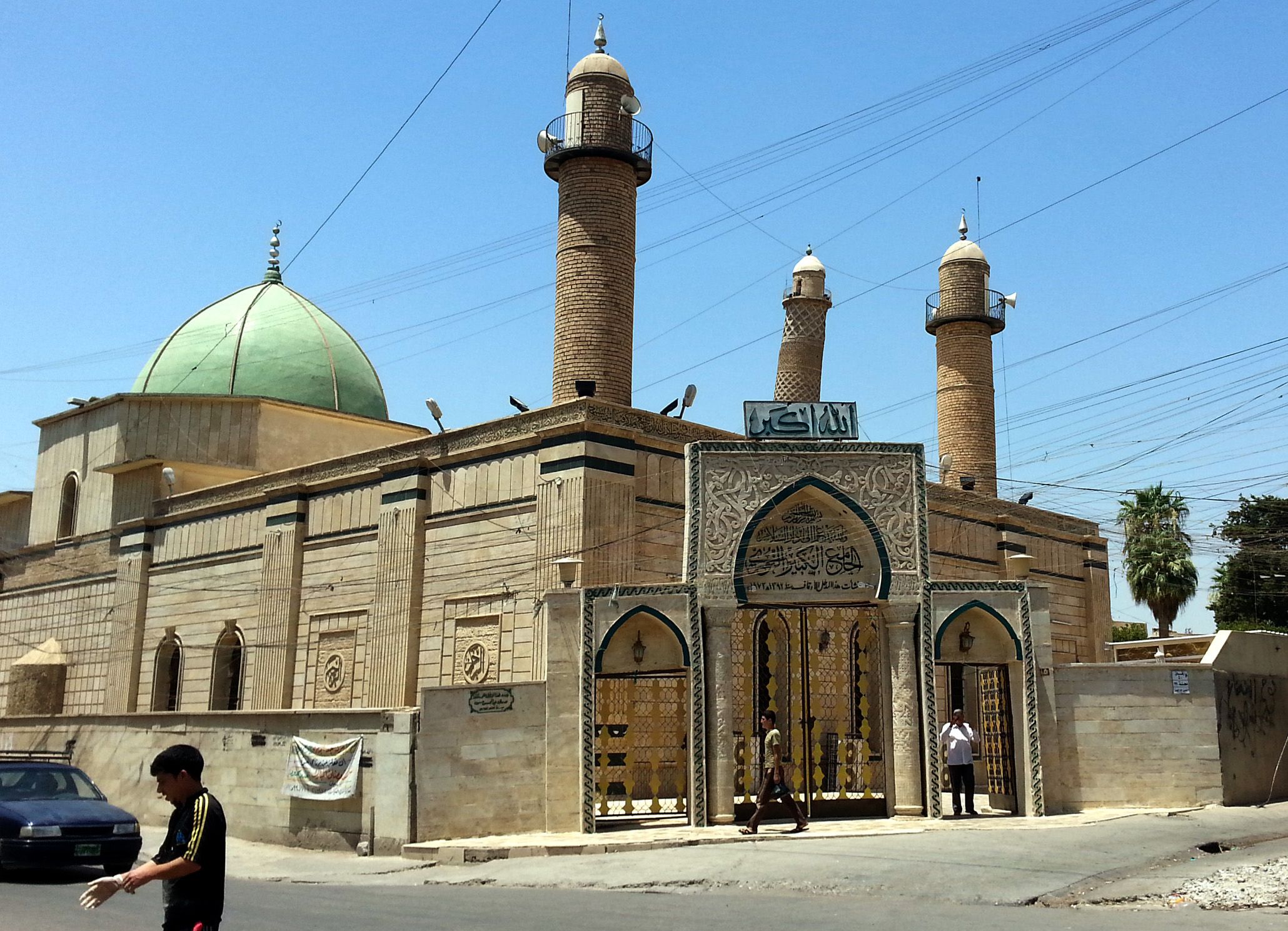
Al Nuri Mosque in Mosul pictured before it was destroyed by ISIS militants, in July 2014. EPA
Al Nuri Mosque in Mosul pictured before it was destroyed by ISIS militants, in July 2014. EPA
June 29: ISIS leader Abu Bakr al Baghdadi strides into the Great Mosque of Al Nuri in Mosul and declares himself the spiritual leader of Muslims. He announces the formation of a caliphate stretching from Aleppo in Syria to Diyala in Iraq, calling the group ISIS.
September 8: Haider Al Abadi becomes Prime Minister after Mr Al Maliki is forced out of office having lost the confidence of most MPs, in the aftermath of the fall of Mosul to ISIS.
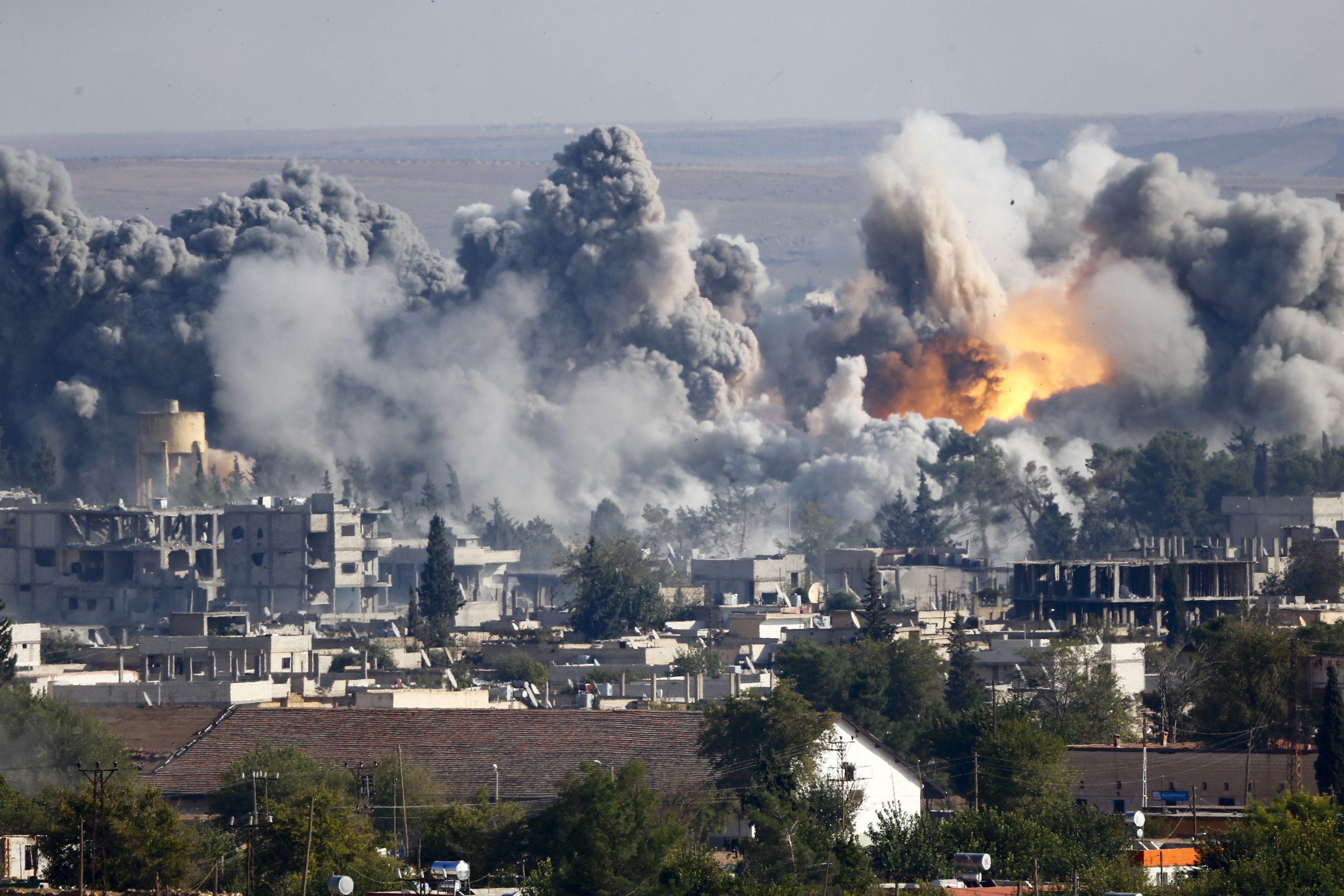
Smoke rises over Syrian town of Kobani after a US strike against ISIS on October 18, 2014. Reuters
Smoke rises over Syrian town of Kobani after a US strike against ISIS on October 18, 2014. Reuters
October 15: Washington launches a campaign called Operation Inherent Resolve. Over the next year, the US military conducts more than 8,000 air strikes in Iraq and Syria. For the next two years, ISIS conducts dozens of deadly attacks in Iraq and across the region, killing hundreds of people.

March 15: Iraqi officials announce that ISIS has destroyed the ruins at the ancient city of Hatra. The insurgents said the shrines and statues were "false idols" that had to be smashed.

The ancient Parthian ruins of Hatra, a Unesco World Heritage site, destroyed by ISIS militants, in Iraq. Getty
The ancient Parthian ruins of Hatra, a Unesco World Heritage site, destroyed by ISIS militants, in Iraq. Getty
March 16: Iraq deploys 30,000 forces in a major offensive to recapture Tikrit from ISIS. Hadi Al Amiri, head of the Iran-backed Badr Organisation, rejects calls by Prime Minister Haidar Al Abadi for more US air strikes. In a later interview with Reuters, Mr Al Amiri calls for the US to speed up arms deliveries.
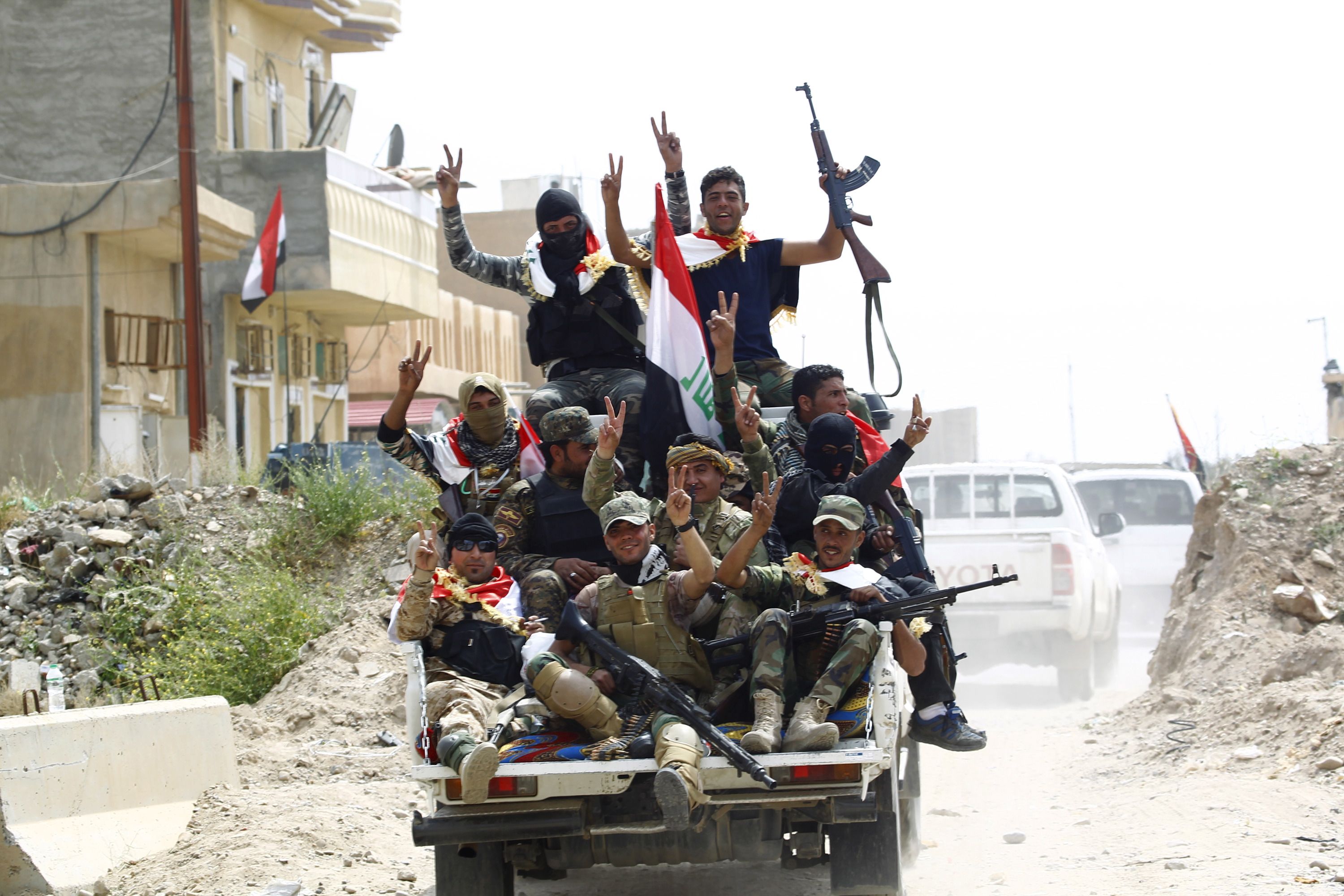
Shiite paramilitary fighters gesture from the back of vehicle in Tikrit, where they are fighting ISIS, on April 1, 2015. Reuters
Shiite paramilitary fighters gesture from the back of vehicle in Tikrit, where they are fighting ISIS, on April 1, 2015. Reuters
April 1: Iraqi forces receive a boost when ISIS is pushed out of Tikrit, the city closest to Saddam Hussein’s home village of Awja. While the Counter Terrorism Service leads the fight at US urging, Shiite militias follow them into the town, setting off a wave of looting and tribal violence.
May 17: After a relentless assault of dozens of truck and car bombs, ISIS force Iraq’s elite Counter Terrorism Service from Ramadi, Anbar governorate’s largest city. The setback for Iraq’s best unit in the war forces the US to re-evaluate its strategy and speed up air strike approval against ISIS targets.
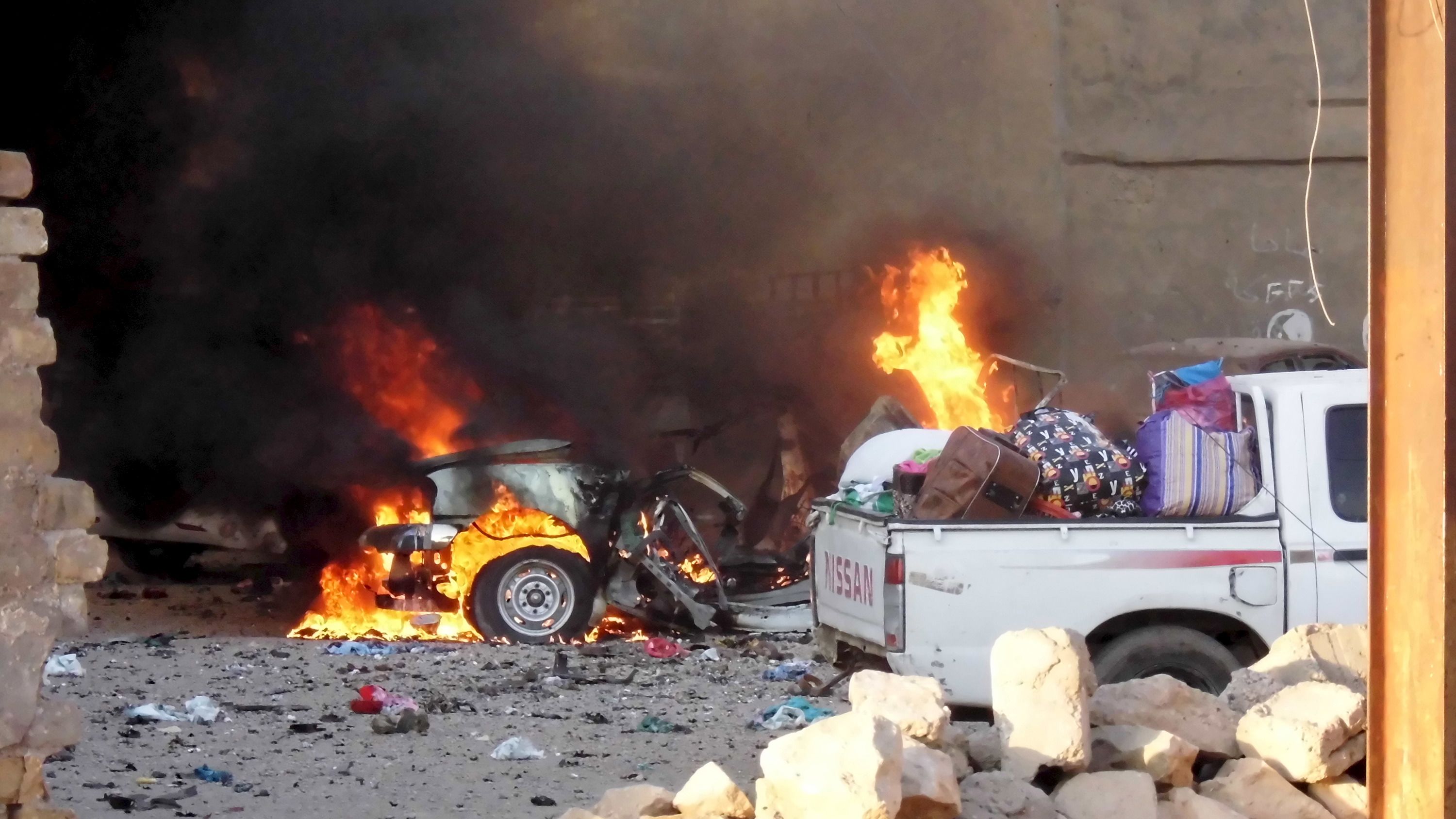
A car is engulfed by flames during clashes between Iraqi forces and ISIS in the city of Ramadi, on May 16, 2015. Reuters
A car is engulfed by flames during clashes between Iraqi forces and ISIS in the city of Ramadi, on May 16, 2015. Reuters
July 17: A car bomb kills more than 115 people in Khan Bani Saad, north of Baghdad. The bombing is claimed by ISIS.
October 15: Iraq recaptures the Baiji oil refinery, the country’s largest, from ISIS. Much of the complex is in ruins after heavy bombardment, and some equipment is later stolen by Iran-backed militias.
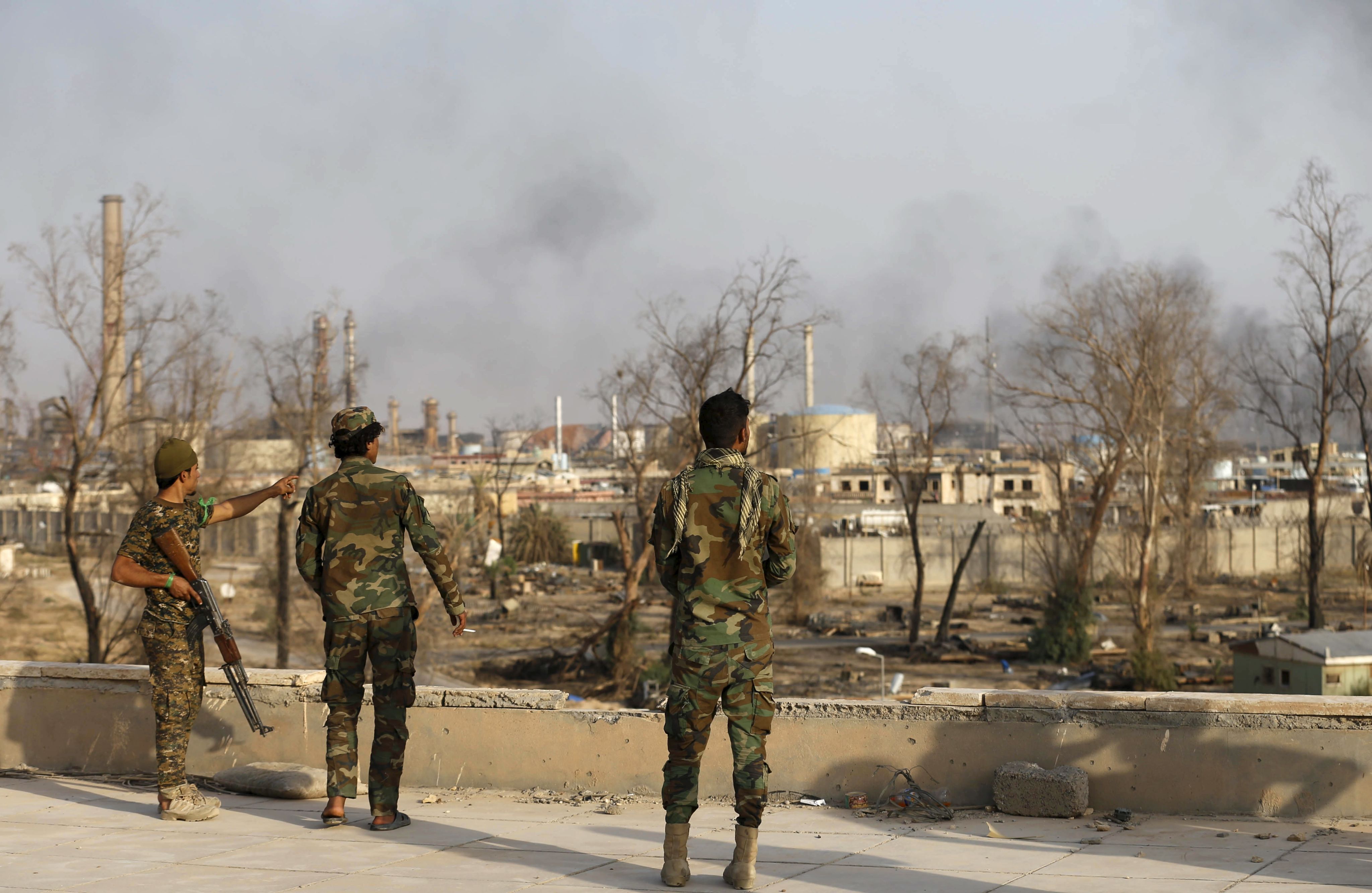
Iraqi security forces stand guard in a Baiji oil refinery, north of Baghdad, on October 16, 2015 after recapturing it from ISIS with the help of Shiite militia fighters. Reuters
Iraqi security forces stand guard in a Baiji oil refinery, north of Baghdad, on October 16, 2015 after recapturing it from ISIS with the help of Shiite militia fighters. Reuters
November 13: Kurdish forces seized Sinjar from ISIS after a prolonged siege, in the largest urban battle undertaken by the Kurdish Peshmerga.
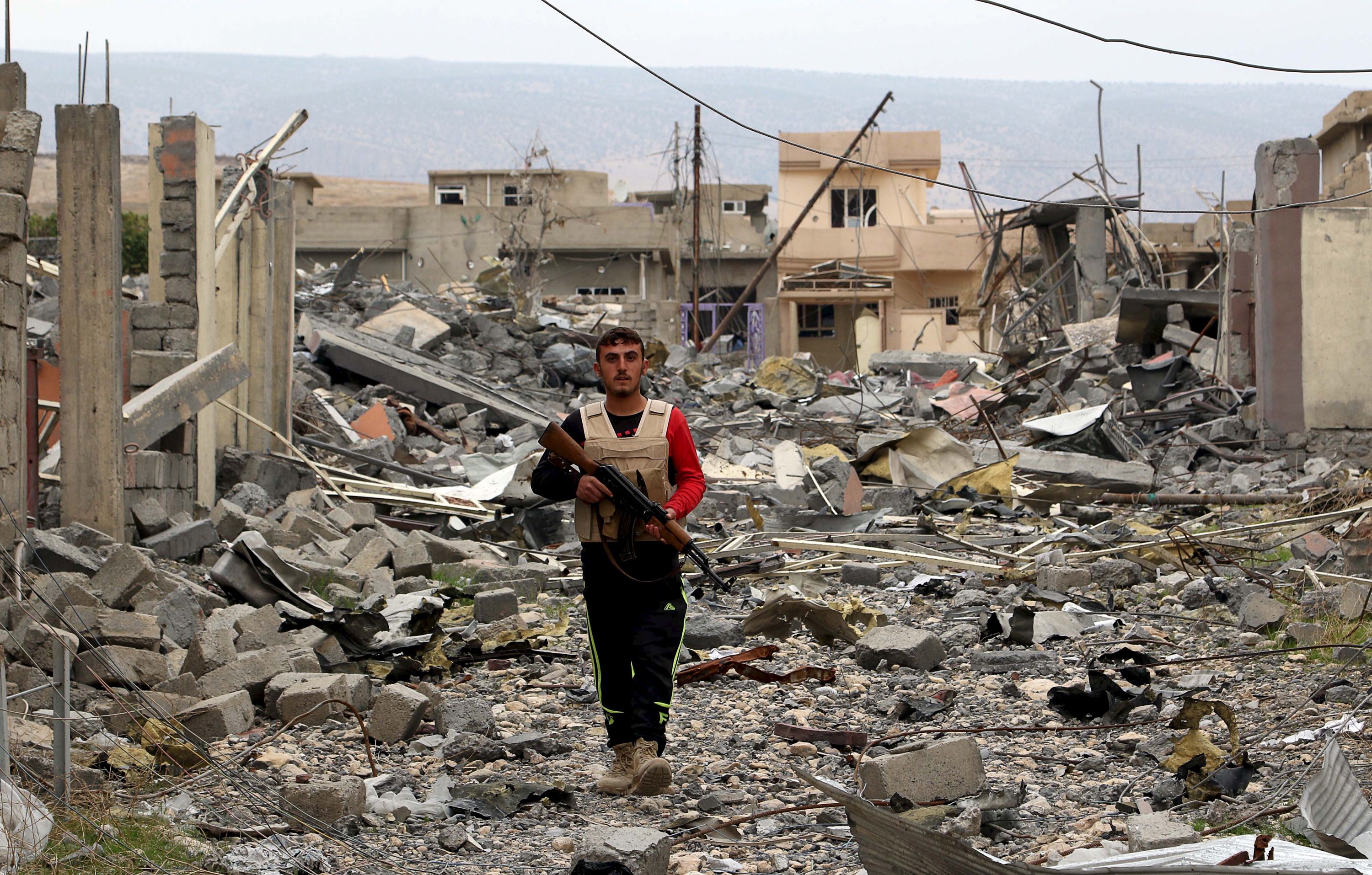
A Yazidi volunteer with the Kurdish Peshmerga forces walks among the rubble in Sinjar, a town destroyed by ISIS, on November 16, 2015. Reuters
A Yazidi volunteer with the Kurdish Peshmerga forces walks among the rubble in Sinjar, a town destroyed by ISIS, on November 16, 2015. Reuters
December 17: Backed by heavy US air strikes, the Iraqi Counter Terrorism Service forces ISIS out of Ramadi.

April 8: Iraqi forces push ISIS out of Heet, a stronghold for them in Anbar.
April 30: Following months of protests, Shiite supporters of Moqtada Al Sadr storm the Iraqi Parliament in Baghdad’s Green Zone.
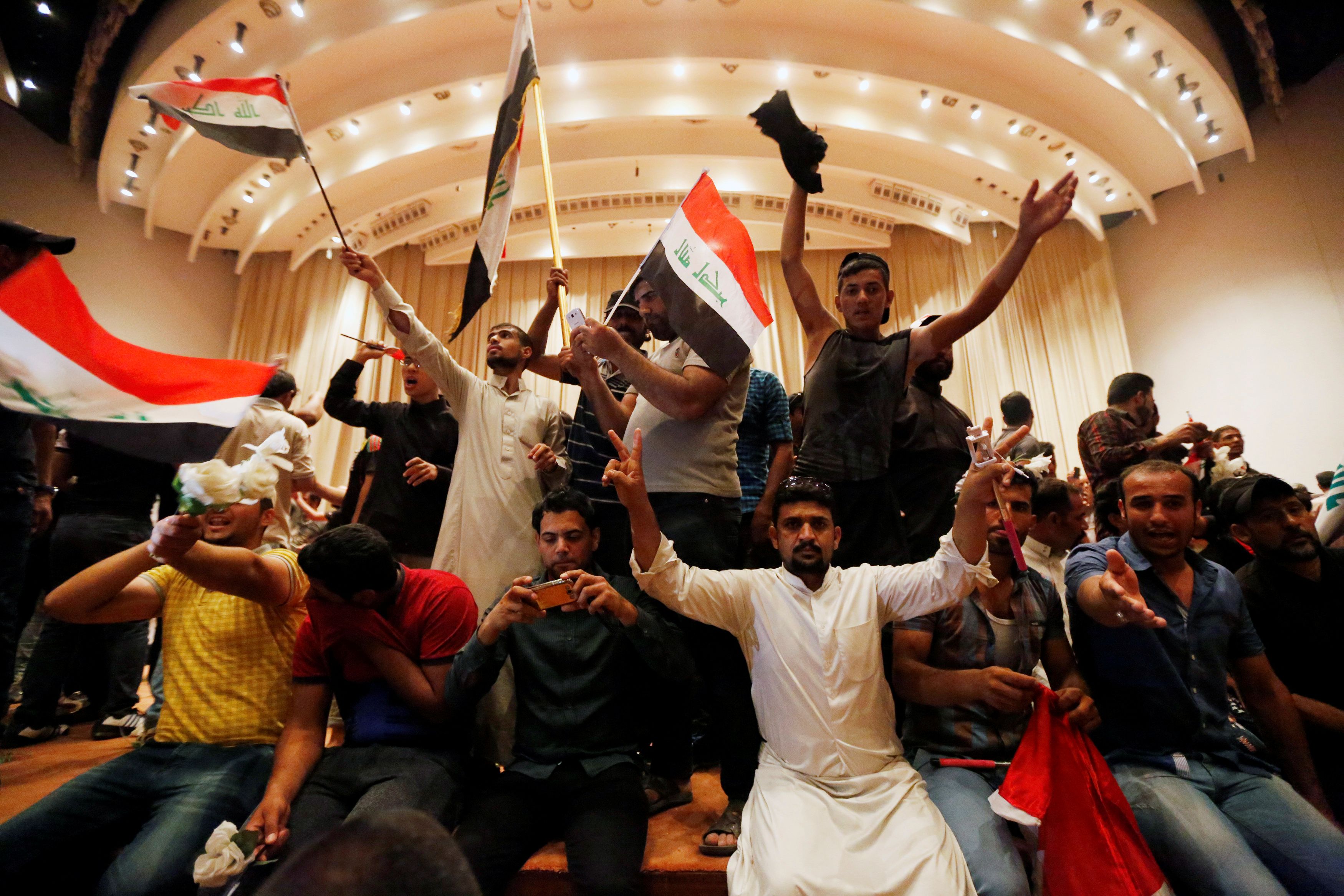
Followers of Iraq's Shiite cleric Moqtada al-Sadr storm the parliament building in Baghdad on April 30, 2016. Reuters
Followers of Iraq's Shiite cleric Moqtada al-Sadr storm the parliament building in Baghdad on April 30, 2016. Reuters
May 11: A truck bombing by ISIS kills more than 60 people in Baghdad.
August 7: Mosul’s forensic department says ISIS has requested death certificates for 2,070 people executed in Nineveh province since June.
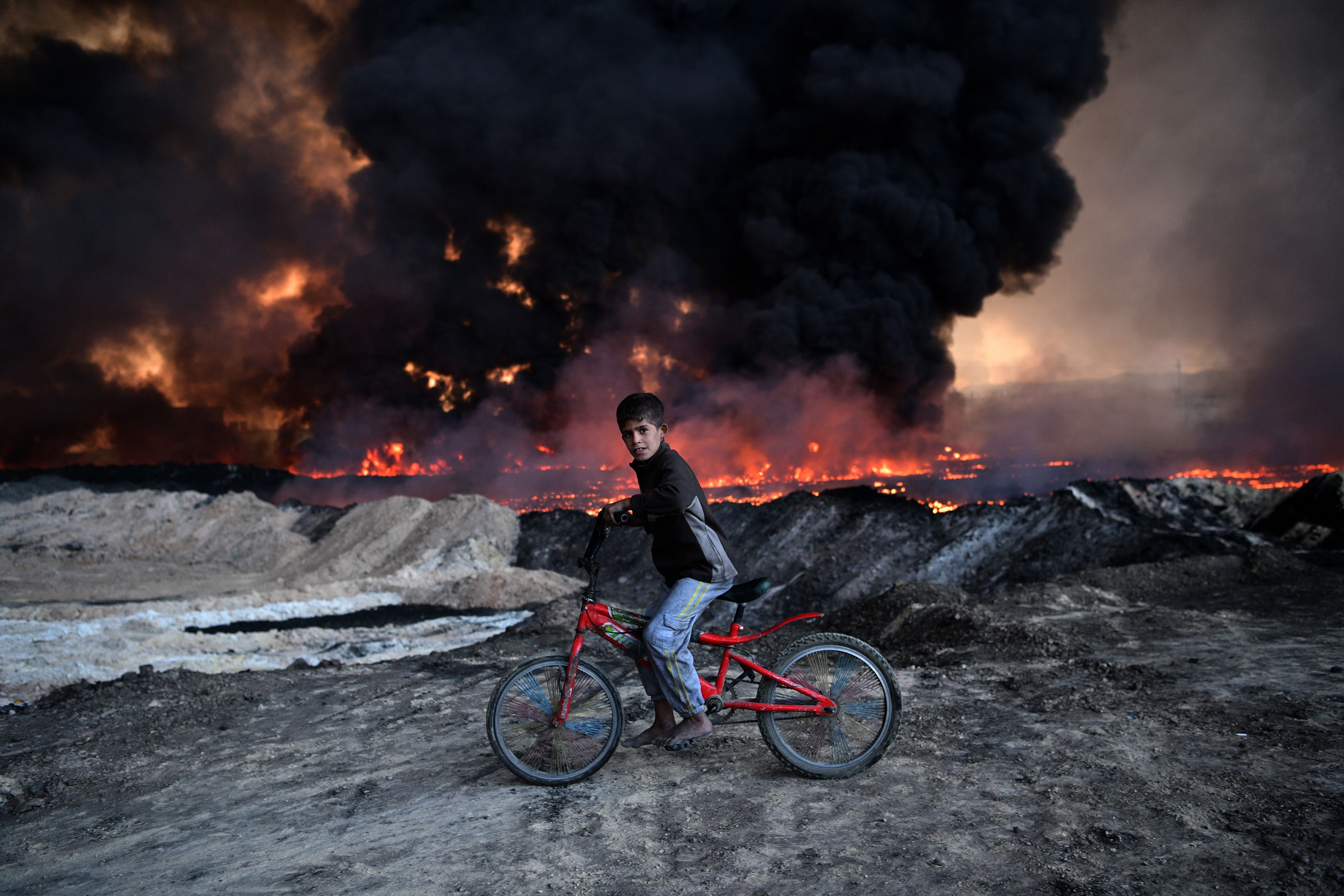
Fire at an oil field that was set on fire by retreating ISIS fighters before the Mosul offensive, on October 21, 2016 in Qayyarah, Iraq. Getty
Fire at an oil field that was set on fire by retreating ISIS fighters before the Mosul offensive, on October 21, 2016 in Qayyarah, Iraq. Getty
October 16: Iraq launches US-backed campaign to liberate Mosul from ISIS.

March 17: More than 200 civilians are killed in a suspected US air strike against ISIS in Mosul.
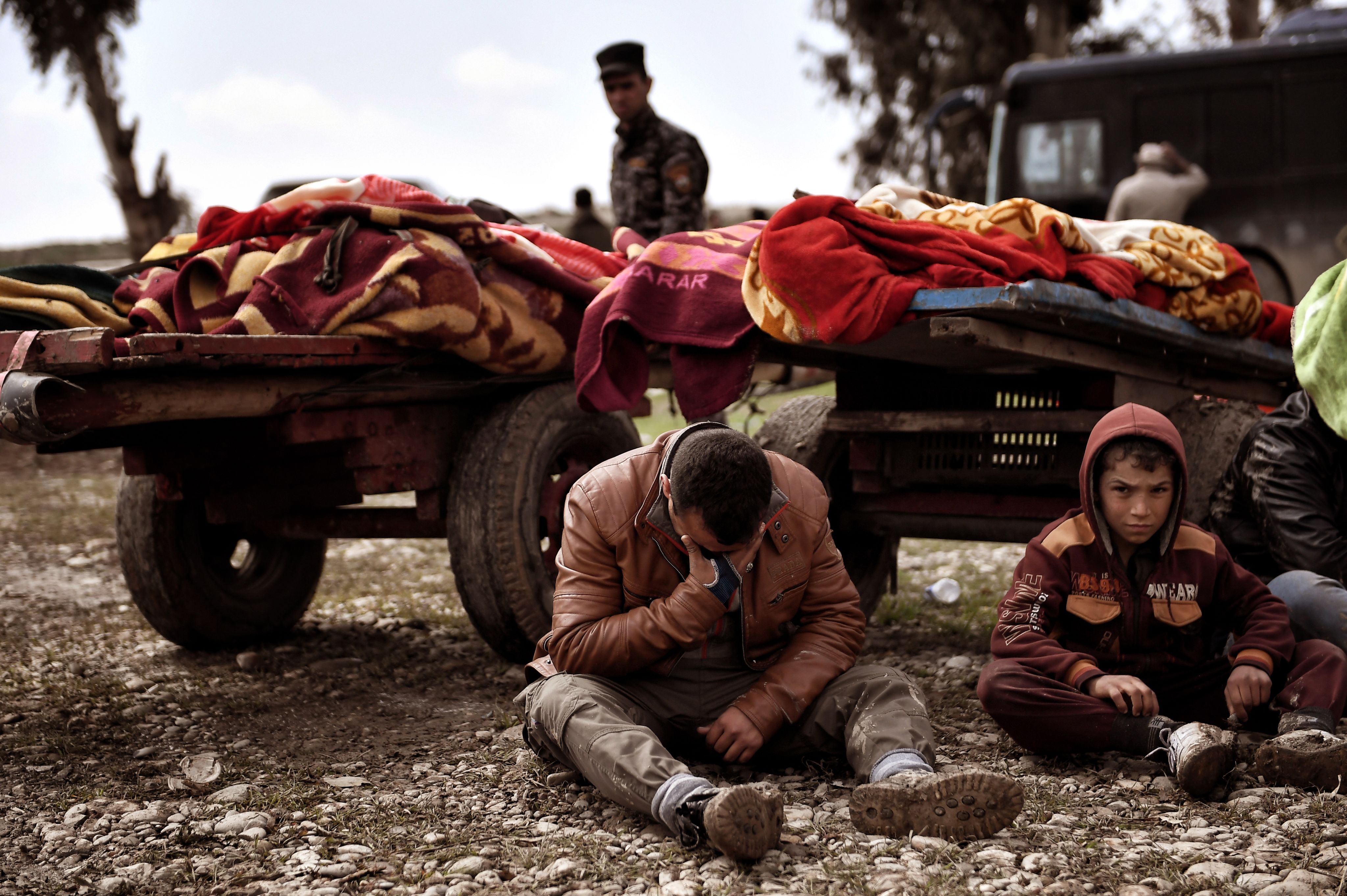
Relatives mourn the Iraqi residents of west Mosul killed in an air strike targeting ISIS on March 17, 2017. AFP
Relatives mourn the Iraqi residents of west Mosul killed in an air strike targeting ISIS on March 17, 2017. AFP
May 30: At least 20 civilians are killed in a car and suicide bomb attack by ISIS.
June 21: Great Mosque of Al Nuri, built in 1172 AD, is destroyed as ISIS militants retreat from Mosul.
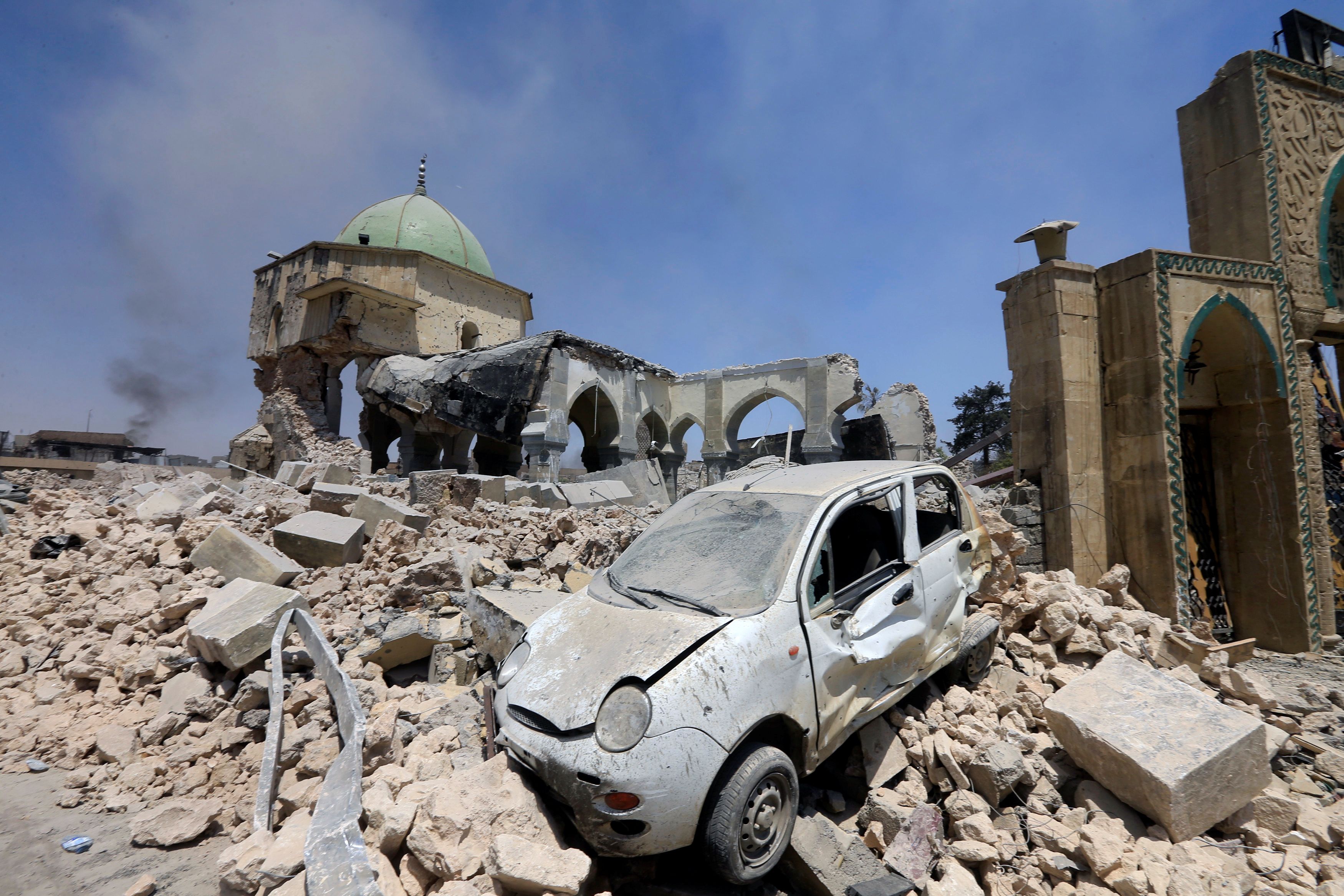
Al Nuri Mosque is destroyed by ISIS militants in the old city of Mosul, on June 30, 2017. Reuters
Al Nuri Mosque is destroyed by ISIS militants in the old city of Mosul, on June 30, 2017. Reuters
July 9: Mr Al Abadi declares victory over ISIS in Mosul.
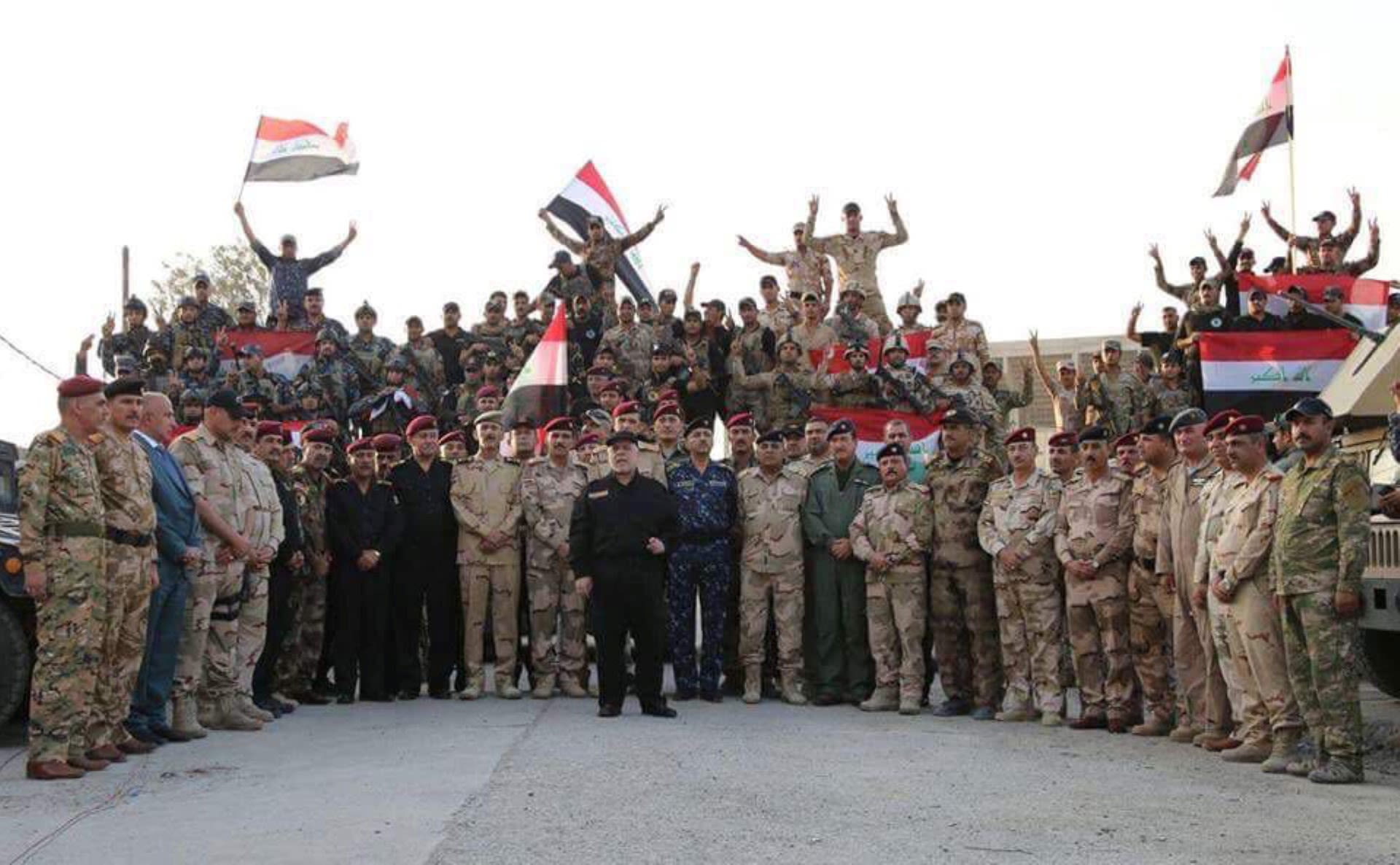
Iraqi Prime Minister Haider Al Abadi (C) poses with federal police and army officers in Mosul, after declaring victory against ISIS on July 10, 2017. AFP
Iraqi Prime Minister Haider Al Abadi (C) poses with federal police and army officers in Mosul, after declaring victory against ISIS on July 10, 2017. AFP
December 9: Mr Al Abadi declares full victory over ISIS.
Words Mina Aldroubi and Robert Tollast
Editor Juman Jarallah
Design Nick Donaldson
Photo Editor Charlotte Mayhew and Tim Knowles
Sub Editor Neil Macdonald

